#something short-- But I was doing some research on star maps and it's relation to pi
Text
Stars in the sky download free

#STARS IN THE SKY DOWNLOAD FREE FOR FREE#
#STARS IN THE SKY DOWNLOAD FREE PDF#
#STARS IN THE SKY DOWNLOAD FREE APK#
#STARS IN THE SKY DOWNLOAD FREE SOFTWARE#
#STARS IN THE SKY DOWNLOAD FREE PROFESSIONAL#
Microsoft Research has put together an educational program that is nothing short of a breakthrough.
They include Hubble images in places where they belong, and a cool feature is that you can switch the view based on where you live.
Google Earth is no longer limited to great satellite images of Earth, they have created color images of the space as well.
#STARS IN THE SKY DOWNLOAD FREE SOFTWARE#
This software not only shows you the skyįrom Earth, but also allows you to "fly" to other locations and view the sky Stellarium is probably a good place to start. For the diehard astronomer, you can download and extended version of the SAO catalog as well.
TheSky Pocket Edition provides access to the virtual sky from your Palm or Pocket PC.
#STARS IN THE SKY DOWNLOAD FREE PROFESSIONAL#
The previous version, The Sky 6 Professional is still a well respected program that does run on 64bit operating systems but is a Windows only program. TheSky X is now available in the The SkyX Serious Astronomer Edition are available for both OS X and Windows. The power of TheSky has come to OS X in the form of the new version of TheSky X student edition.Their website also has a Hot Fix section for up to date software updates (you will have to register). TheSky is their extensive database, ability to remotely control aĬomputerized telescope, and work seamlessly with their other popular Least the most popular night sky objects.īy Software Bisque is probably the most popular planetarium softwareĪvailable. Star charts for a night of viewing and will have extensive databases with at It most cases, the software below can print our This type of software is used to map the night skyįrom any location on the Earth.
#STARS IN THE SKY DOWNLOAD FREE PDF#
The ASP has releaced a PDF file of astronomy related apps for the iPhone and Android. If there is a software that is worth mentioning, Programs that do about the same thing - the features of one might be missing inĪnother, but that other may excel in something else (if that makes sense). Population in fact, it is common for one person to have several different All of the software listed here are popular among the amateur astronomer I am in no way endorsing one brand over another. While I use some of these software titles, In most cases, there are manyĭifferent versions of software that do a particular thing. Star Tracker - Mobile Sky Map & Stargazing guide 1.6.Astronomy, there is a wide variety of software.Star Tracker - Mobile Sky Map & Stargazing guide 1.6.32.Star Tracker - Mobile Sky Map & Stargazing guide 1.6.37.Star Tracker - Mobile Sky Map & Stargazing guide 1.6.39.Star Tracker - Mobile Sky Map & Stargazing guide 1.6.53.Star Tracker - Mobile Sky Map & Stargazing guide 1.6.68.Star Tracker - Mobile Sky Map & Stargazing guide 1.6.73.Star Tracker - Mobile Sky Map & Stargazing guide 1.6.75.Star Tracker - Mobile Sky Map & Stargazing guide 1.6.78.Star Tracker - Mobile Sky Map & Stargazing guide 1.6.83.Star Tracker - Mobile Sky Map & Stargazing guide 1.6.85.Star Tracker - Mobile Sky Map & Stargazing guide 1.6.86.Star Tracker - Mobile Sky Map & Stargazing guide 1.6.87.
#STARS IN THE SKY DOWNLOAD FREE APK#
Other Star Tracker - Mobile Sky Map & Stargazing guide APK versions (13):
#STARS IN THE SKY DOWNLOAD FREE FOR FREE#
Enable more Messier Objects and Constellation Arts for free version.įor more information on downloading Star Tracker - Mobile Sky Map & Stargazing guide to your phone, check out our guide: how to install APK files.
Fix the issue that sometimes need relaunch to take effects after make purchase.
Add Setting menu, more settings are coming.
Please REMOVE metal case or magnetic cover to avoid motion sensor interference.
Fixing some star names with official IAU name.
Unlock more benefits with a premium subscription.
View stars, planets, and constellations.
Likewise, it enables them to launch the night mode and enjoy the search functionality to find stars, planets, or constellations much quicker. For instance, users can deploy the time-machine functionality and view the sky at any specific moment in the past or future. Once purchased a subscription, the developer grants access to a bunch of additional benefits. It is worth mentioning that the app also has a premium version. Furthermore, you can zoom in, zoom out, turn off the background music, and set the location manually. Just point your device towards the sky and move it slightly to any direction you want to discover new objects. They get the chance to view the planets in our solar system, dozens of constellations, and thousands of stars within a beautifully-designed interface. The mobile solution enables users all over the world to explore the night sky with amazing graphics. Besides that, it is compatible with all screen sizes and resolutions. The app has an intuitive design and does not require a permanent Internet connection, so you can use it anytime and anywhere, even when offline.

0 notes
Text

Johngalli’s interest expanded into star maps temporarily in addition to planetary interests.
At that point in his life, he attempted to memorize the inner-workings of the the azimuthal equidistant projection. This would lead him to eventually get the three tattoos of the world on his back and shoulders.
He would receive these not too long after his cataracts began to truly injure his sight to an irreversible extent.
#headcanon ;; johngalli a#something short-- But I was doing some research on star maps and it's relation to pi#and started to learn more about azimuth--for the most part the azimuthal equidistant projection#I really like the idea of Johngalli being quite good at math and astronomy(he does have the planet on his back)#(and those symbols on his cheeks look AWFULLY like pi ))#but something short uvu i'm in a big mood for this boy
2 notes
·
View notes
Photo
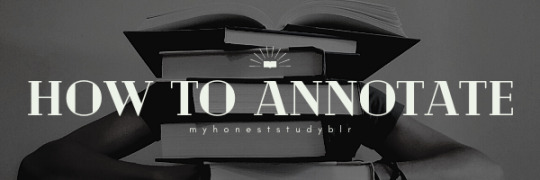
i received an ask from @sunset-study asking me how to annotate texts so i thought i would do a post giving some of my tips! as an English literature student, i spend a lot of my time doing annotations on loads of different types of texts so i think i have some good advice that i can give. i hope that you will find this helpful and if you have any other questions, please feel free to send me an ask!
disclaimer: these are my personal tips and experiences and i’m sure that there are many more that are relevant. i have tried to do a little bit of research to get some other ideas which hopefully will make this a useful post but as always i appreciate others adding their opinions and advice in the comments!
[Estimated Reading Time: 7 minutes]
What is covered:
General Tips
Things to look for
Specific Tips for Annotating Novels
Specific Tips for Annotating Plays
Specific Tips for Annotating Poetry
Other resources
General Tips
don't just highlight. this is very passive and often you will not really be taking in what is important.
pencils are great for annotating. if you are anything like me, when you are annotating, you often are doing it as the thoughts come into your mind so a pencil allows you some leeway to erase and refine ideas. also when you are writing in a book, i personally do not have enough confidence to write in pen.
don’t annotate extensively the first time you read. often on a first read, you don't see the recurring imagery or features because you don't have the whole context so don't annotate deeply the first time you read something. that said, it can often be good to jot some questions in the margins that you have because these can be useful to remind you of your thoughts when you reread.
think of some symbols to indicate important or interesting parts. for example, if it is a dramatic section, i will box it off and put a big exclamation mark. or if something is confusing or unclear, use a question mark. i tend to put a star for a section that is important. you could think of symbols for humour, foreshadowing, particular themes or characters etc.
actually respond to the text. this seems like an obvious one but a lot of the time, because we are taught in schools all these fancy techniques, when we see one of them in a text we just highlight them and note that its a metaphor or simile or foreshadowing. what you should try to do is explain - briefly - why that is important and its effect. also if you have any personal reaction to it, note that down as well because this can be really helpful when writing essays because it shows that you’ve actually engaged with the text.
practice, practice, practice. annotation is a skill and honestly it can be quite difficult because you need to often read between the lines and summarise, while also analysing. so take some time to focus on this skill and create your own method and shorthand.
Things to look for:
structure. are the paragraphs long? is sentence varied or does it remain quite consistent? are there any repeated words or phrases? what is the overall shape of the text? where does the narrative start? does the focus shift anywhere?
language. what are the literary devices used in the text? if so, what is their effect? has the author used a particular semantic field? are there any usual words? are there repeated words? are there any individual words that stand out to you? what are the connotations of these words? are there any words that you don’t know? if so, what do they mean? is there any unusual syntax?
characterisation and voice. who is speaking in the text? if it is third person, how ‘close’ or ‘distant’ are we to the character? can we trust the character? are they an unreliable narrator? what are their key features? do any of these features link to key themes? if so, where is that shown in the text? is the author using a particular voice in order to get a specific reaction?
themes. what themes is the author exploring? where does the author explore these themes? are particular opinions (either by a character or perhaps the implied opinion of the author) expressed on the themes? are there any words or phrases that link closely to this theme?
Specific Tips for Annotating Novels
SUMMARISE REGULARLY
a novel is often long and there is a lot of stuff to cover throughout it so it is really important to keep making sure that you understand what is going on. summarising will also help you when revising.
for example, after each chapter quickly summarise the key points in a few sentences - which characters were important, did the plot move forward in any important ways, what themes were explored.
you could either do this on a post it note or if you have space on the last page of the chapter. make sure that it is not too long. a few sentences is absolutely fine.
KEEP A LIST OF CHARACTERS
characters are obviously very important in a novel so make sure you know who’s who and where they come into the book. you could write the list of characters or a little character map on the inside cover of the book, which you can refer to if necessary.
COLOUR CODE
i personally don't colour code that often when annotating. i usually only do it in important scenes and moments where there is a lot going on and things can get very confusing. that said, colour coding can be particularly useful to keep track of themes in the novel.
there are many different ways that you can do this. for example you could have a particular highlighter colour for each theme. you could also put coloured sticky tabs on the page so you can quickly find the themes throughout the novel.
Specific Tips for Annotating Plays
This is mostly the same for novels so take all of the tips above and apply them to the play you are studying with two main - VERY IMPORTANT - additions:
NOTE THE DRAMATIC FUNCTION
a play is written to be performed and this has a huge impact on the text, because it can affect how we interpret a particular character, theme or scene.
so it is SO SO important that you remember that it is being performed and think about the different ways that it could be acted and how the audience could respond to it.
on that note, remember that every performance, actor and audience is different so try to think of ALL the ways it could be played and how our interpretation could differ
PAY ATTENTION TO STAGE DIRECTIONS
this is a related point to the one above. my GCSE English teacher used to go on about this all. the. time. because it is so easy to overlook them and not consider them a real part of the text. BUT they are such a key part because they can give hints to performance as well as the atmosphere which might otherwise be difficult to discern just by reading the dialogue. they can also be good ways to demonstrate character traits
Specific Tips for Annotating Poetry
NOTE GENERAL FEATURES (STRUCTURE, RHYMING, METER, CONTEXT, THEMES, ETC.) SOMEWHERE SEPARATE
poems are obviously much shorter than plays and novels so they are often packed full of interesting language points to annotate. therefore if you try to add in all of this other stuff in your annotations using arrows, it is likely that it is going to get very full and confusing.
therefore, i would suggest only directly annotating language features for the poem and writing your notes on the more general features of the poem elsewhere - for example on a post-it note, or if there is a bunch of white-space under the poem. then it is easy to find and refer to but won't mix with your annotations and make it confusing so that you feel that you need to rewrite more notes on the whole poem
if there is a particular word or phrase that is important for the above features (for example, links significantly with the context or has unusual - and therefore probably significant - meter) you can notes this on the text using arrows but keep it specific and short. you can expand on it in more depth in your general notes
IDENTIFY THE TONE AND MOOD OF THE POEM
this is good to identify because it can help you focus on the language that is important and helps you to interpret the meaning.
THINK ABOUT THE SOUND OF THE POEM
poems are usually meant to be lyrical and rhythmic in some way and read aloud. so think about how these words sound when you read it (are they harsh or soft) and consider the rhythm that the poet creates through punctuation. it could be helpful to consider a poem like the lyrics of a song and imagine what it would sound like if it were set to music
rhyming is an important part of this and you could note - just for your own reference - the rhyme scheme (if there is one) using letters at the end of the line. but again, referring back to tip one of this section, talk about the rhyme scheme in greater depth elsewhere so as not to clutter your notes
Other Resources
there are so many resources that you can find on the internet about annotation but here are just a couple that i thought were useful:
Annotation Guide Produced for AP Language Students
BBC Bitesize GCSE Revision Page on Annotating Texts
General How to Annotate Guide (Note: this is not just for literature but also for textbooks but has some great tips)
Annotating Poetry Guide
#myhoneststudyblr#my advice#ref#sophie speaks#me#text post#tips#studyblr#study tips#study advice#how to annotate#english literature#annotations#literature#poetry#studyblr masterpost#masterpost#studyblr support#mine#my notes
518 notes
·
View notes
Text
Writing Help - Genres

As a writer, you really need to know what age group you intend to write for. Depending on the age, you may need to censor yourself or glaze over some heavier topics. Think of ATLA and how they never actually stated Jet died but instead insinuated it. Or, in YA novels when characters get close and the narrator skips over the most NSFW parts of the sex scene.
Disclaimer: Keep in mind I’m writing from my knowledge and what I remember reading at a certain age. Some research has been done for accuracy. I also don’t enjoy adult novels, particularly because they tend to be too much for me (...there tends to be lots of NSFW). With that said, forgive me if the examples aren’t amazing.
Who Do You Want to Write For?
Understanding who you want to write for makes the process much easier. If you want to write horror books for children because there aren’t enough of them, great. You can then proceed to write down your ideas and focus on the scare factor as well as how detailed you want your descriptions to be. Less is more, especially for younger kids. A single sentence in middle-grade horror can disturb even me. And trust me, most things don’t bother me.
Once you know what to write for, you can study your demographic more. By that, I simply mean what people your age are interested in. This isn’t saying you cannot write what you want to for who you want to write it for, but looking at the demographics will get your book(s) out there. For example, children might not enjoy or understand romance but gravitate more to adventure, comedy, slice of life, or superhero stuff.
What Do These Genres Entail?
You need to know what you’re getting yourself into when you write, so I’m going to give you a shortlist of genres and the content that is appropriate for each. Assuming most aren’t writing for children younger than 5, I won’t include those genres.
Remember to do your own research.
Children (5-8)
Due to childhood development, this genre varies quite a bit. I’ll generalize for simplicity.
Children between the ages of five and eight typically begin to independently read. Development varies, but using simpler language and including pictures aids them in taking in the content and understanding it.
From younger to older children: picture books, comics, short chapter books. It depends on their development and interests as well.
Even in picture books, these are usually longer than for younger children. They never exceed 100 pages and often have larger fonts.
Characters are usually animals or younger children (some with their parents).
Book examples: Pete the Cat, Poppleton, The Magic Tree House, Fantastic Mr. Fox
Middle Grade (8-12)
Pictures are still relevant sometimes, but it depends on the book. Most kids this age can visualize and don’t need much unless it’s something like fantasy or horror (Coraline has an edition with pictures as well as a disturbing graphic novel).
Slang begins to be included at this age and more mature language. Depending on the book, simple swears like “crap” or “damn” may be used. Insults begin to pop up as jokes and body humor are more appropriate at this age.
Sometimes romance makes its way into these books, but kids these ages still gravitate to things that aren’t so “gross.”
Middle-Grade books begin to exceed that 100-page mark and chapter book series with a logical plot and/or order comes about.
Characters are typically human, but supernatural creatures are popular in novels in this age group.
Book examples: Coraline, Ramona’s World, Because of Winn Dixie, Charlotte’s Web, Goosebumps
Young Adult (12-18)
You (typically) won’t catch pictures in a YA book, rather vivid descriptions. The only time pictures are in books is when maps are included. Pictures are an author’s choice.
YA is also a very large genre with varying developmental stages. Some books gravitate more to middle grade, others new adult.
The genres of books boom in YA because so much more can be done. You will catch books that are strictly romance, others crime, and even mystery.
Swearing is no longer avoided in YA novels. Characters will openly say fuck a thousand times and no one looks twice.
YA books tend to have deeper conversations than books for younger audiences. Killing off main characters isn’t looked down upon. These books also tend to speak about and represent sex, but never in grave detail. Characters will never get past removing clothing. The issue of sex in YA is also a controversial topic that is pretty interesting when looked into.
The themes of YA books are ones that teenagers typically experience. This could be gender, sexuality, self-worth, etc.
YA books are usually between 200 and 500 pages. It depends on whether it is a novella, stand-alone, or series.
Characters are in middle or high school, to which the readers can relate to. The home and parents are also relevant. Lots of talk about family life and such.
Book Examples: The Fault in Our Stars, The Book Thief, Divergent, The Hunger Games, The Catcher in the Rye
New Adult (18-25)
Once again, pictures are usually maps and such.
NA does everything a YA does in more detail. It’s the genre for people who like YA but want a bit more or don’t want to be held back as much. When your target audience doesn’t involve children, your creative freedom can run (nearly) wild.
Sex scenes are explicit. No one questions a sex scene in a NA, nor censors them in the way YA does. The narrator doesn’t have to glaze over this, rather describing the emotional and physical aspects of it as they would with anything else.
In comparison to YA, NA books tackle different themes. A NA book might not focus on growing up, rather the independence or struggle of having grown up. More adult things such as struggles for housing and finance might arise differently than it would to someone younger watching their parents struggle and going down along with them.
NA books tend to fall in the same page range as YA books. Again, very similar, but not the same. Think of YA as the bridge between YA and Adult. A little more, but not too much.
Characters are typically between the age range of the readers, but they don’t have to be.
Book Examples: A Court of Thorns and Roses, Lily and the Octopus, Red White and Royal Blue, Code Name: Verity, The Good Girl
Adult (25+)
Keep in mind that I do not read adult books...
I’ve never heard of photos in adult novels. Correct me if I am wrong.
Nothing is really off-limits in adult books. Anything you could ever want to write about can fit in this genre. Period pieces, historical fiction, horror, and autobiographies are often found as adult books.
Pieces are much more complex than those meant for younger audiences such as a YA or NA. They also tackle more difficult topics such as racism and abuse in more mature ways. It’s much easier to cover something like that in a book for older audiences than younger ones because you don’t necessarily have to simplify things. Focusing on the experiences of the character as if it were of coming of age isn’t as important.
The detail in adult books also changes in comparison to books for younger audiences. Whereas violence maybe something quick and easy, an adult book will drag it with vivid details. In Cirque du Freak, a middle-grade novel, the tearing of a person’s arm was described in two sentences in a way that made the reader imagine what an arm tearing would be like. In an adult book, you best be sure you’ll be reading about anatomy and immense amounts of gore.
Adult books can be short or extremely long. It depends on the genre once you hit adult books, as attention span isn’t much of a big deal anymore.
The characters in an adult book can be any age. It’s the content at this point and not who’s reading. An adult book can follow a tween/teen, an adult, or an elderly person. It doesn’t matter. What does matter is how you handle what is happening to certain characters. For example, if your character is a minor, you shouldn’t be writing graphic sex scenes.
Book Examples: The Help, The Girl on the Train, The Handmaid’s Tale, The Kite Runner, The Shining
Conclusions
I feel like I could write more in this post, but I won’t. It will be much too long if I say anymore. It’s really up to what you like and the way you want to execute it. As a newer reader, I find that I like YA novels but gravitate to the grittier or mature ones. I dislike sex scenes, so the intimacy in YA is just enough for me.
For my writing, I want to write a NA that can achieve what I like and in the way I enjoy it. In my reading endeavors, these past eight months, the Feverwake duology (my ever mentioned series...) has hit what I enjoy. While it is categorized as YA, the second book leans more toward NA and I love that. The way the author writes is also similar to the way I do, which is cool.
In the end, do what you love. Keep your audience in mind and remember that you don’t have to fit yourself into one genre. James Patterson wrote books for children and adults. Have I read any of his works? No, but I have family and friends who do enjoy or have enjoyed his work. You wanna write a book for your younger sibling? Do it. You want to write a book you need or want? Do it. You want to write a book that will make adults feel like children again? Do it.
You’re the writer and write for a reason. Keep writing a passion, not a chore.
[Gif from Ouran High School Host Club]
7 notes
·
View notes
Photo



AAS NOVA FRBs Are Spiraling Out of Control By Astrobites First discovered in 2007, fast radio bursts (FRBs) have been the talk of the town for the last few years. As their name suggests, FRB sources emit very fast (millisecond-long) bursts of radiation at radio frequencies. Due to their very high dispersion measures (DMs), we know that FRBs are typically located in galaxies outside of the Milky Way, although the first galactic FRB was detected in March 2020. While the majority of FRBs are one-off events, some FRBs repeat, and two even repeat periodically! Even with the huge effort to study FRBs over the last few years, however, we still have much to learn about these objects. In particular, while hundreds of FRBs have been discovered, we have only localized about a dozen FRBs to their respective host galaxies. Localizing FRBs is very important for auxiliary science, such as the missing baryon problem, and for determining what produces FRBs. By comparing FRB host environments with the hosts of other transients, we can hopefully determine whether FRBs might come from similar origins. This is what today’s authors explore! Hubble for the Win! The authors use infrared (IR) and ultraviolet (UV) observations from the Hubble Space Telescope to study the host galaxies of eight different FRBs. Six of these observations are newly presented, while the host galaxy of the infamous FRB 121102 (the first repeating FRB) and FRB 180916 (the first periodic FRB) were reported in previous studies. So What Is Cooking for These Eight FRBs? First, the authors locate the FRBs within their host galaxies. Of the eight FRBs, five are located within spiral galaxies as shown below in centre image. This is not unexpected, as ~60% of the observed galaxies in our universe are spiral galaxies. While they are located within the spiral arms of their hosts, the five FRBs are not actually located at the brightest points of the spiral arms (but note that they have huge error regions!). The authors are also able to convert the UV light at the position of the FRB to the star formation rate density at this position, and the IR light at the position of the FRB to the stellar mass surface density at this location. As shown below in lower image, only FRB 121102 and FRB 180916 lie in areas with a lot of star formation (and the star formation rate for FRB 180916 is an upper limit). The other FRBs tend to lie in more moderate, although slightly higher than average, regions. This is a bit surprising as young magnetars, a very popular origin for FRBs, are typically located very close to points of high star formation. There is almost a perfect 1:1 correlation between the stellar mass surface density at the location of the FRB and the average for the FRB’s galaxy, suggesting that FRBs lie in typical surface mass density regions within their host galaxies. The authors also use the properties of the FRBs within their host galaxies to try to identify (or rule out) possible mechanisms for the origins of FRBs. In particular, they focus on five properties: 1. The distance between the FRB and the center of the host galaxy, i.e., the radial offset. 2. The distance between the FRB and the center of the host galaxy after normalizing by the size of the galaxy, i.e., the normalized radial offset. 3. The brightness of the galaxy at the location of the FRB as compared to the brightness throughout the galaxy in the UV band. The UV light can be used as a proxy for star formation within a galaxy. 4. The brightness of the galaxy at the location of the FRB as compared to the brightness throughout the galaxy in the IR band. The IR light can be used as a proxy for stellar mass within the host. 5. The amount of light within the galaxy that is interior to the FRB’s location, known as the enclosed flux. The authors compare these properties of FRBs within their hosts to that of six different transient phenomena: long duration gamma-ray bursts (LGRBs) short-duration gamma-ray bursts (SGRBs), Ca-rich transients, Type Ia supernovae (Type Ia SNe), core-collapse SNe (CCSNe), and super-luminous SNe (SLSNe). While it can be a bit difficult to remember all of these different transients, they can generally be lumped into three different categories: 1. Massive star explosions (LGRBs, CCSNe, SLSNE) 2. Explosions involving older stellars objects such as neutron star mergers (SGRBs) or white dwarfs (Type Ia SNe), and 3. Objects with unknown origins (Ca-rich transients). From their comparisons, the authors find that the properties of LGRBs, SGRBs, SLSNe and Ca-rich transients are inconsistent with those of FRBs. The table below indicates which properties are inconsistent for each of these transients (marked with X). The authors cannot rule out CCSNe and Type Ia SNE as being associated with FRBs. This is similar to another recent result that finds FRBs are consistent with CCSNe (and hence magnetars born from CCSNe) but different from this result that finds it unlikely that Type Ia SNe are associated with every FRB. For the fifth property, the enclosed flux, the authors don’t compare the distribution from the FRBs to that of the other transients. Instead, they only conclude that the FRBs appear to trace the distribution of light within their host galaxies. So Where Does This Leave Us? If there is one key transient associated with FRBs, then this work suggests that it is not LGRBs, SGRBs, SLSNe, or Ca-rich transients. However, there is one very important caveat to the authors’ work, which is that they group repeating and non-repeating FRBs together in their sample. So it is possible that there is not just one but multiple mechanisms responsible for the FRBs within their sample. Thus, the mystery of what produces FRBs continues… TOP IMAGE....Hubble Space Telescope infrared image of the spiral host galaxy of FRB 180916. [Mannings et al. 2021] CENTRE IMAGE....Host galaxy images for each of the FRBs with the FRB location circled. The FRBs that reside in spiral arms are labelled using a blue “S.” [Mannings et al. 2021] LOWER IMAGE....Left: Comparison between the star formation rate density for different FRBs as compared with the average for the host. There is no clear relation between the two, but we note that many of the observations are upper limits (indicated with triangles). Right: Comparison between the stellar mass surface density for different FRBs as compared with the average for the host. There is almost a perfect 1:1 relation between the two. [Mannings et al. 2021] Title: A High-Resolution View of Fast Radio Burst Host Environments Authors: Alexandra G. Mannings et al. First Author’s Institution: University of California, Santa Cruz Status: Submitted to ApJ Editor’s note: Astrobites is a graduate-student-run organization that digests astrophysical literature for undergraduate students. As part of the partnership between the AAS and astrobites, we occasionally repost astrobites content here at AAS Nova. We hope you enjoy this post from astrobites; the original can be viewed at astrobites.org. Original astrobite edited by Viraj Karambelkar. About the author, Alice Curtin: I’m a second year MsC student at McGill University studying Fast Radio Burts and pulsars using the Canadian Hydrogen Mapping Experiment (CHIME). My work mainly focuses on characterizing radio frequency interference, investigating multi-wavelength counterparts to FRBs, and using pulsars as calibrators of future instruments. When not doing research, I typically find myself teaching physics to elementary school students, spending time with friends, or doing something active outside.
3 notes
·
View notes
Text
Prompt #10: Avail - “Weaving the Cloaks, Forging the Dagger.” - The Book of Thursby: Scions of Numenor
“I never expected that our work would evade notice, rather I hoped to effect some measure of control over how it was observed, assessed, judged.”
-Benjimir Thursby, “Seven Stars to the Horizon.”
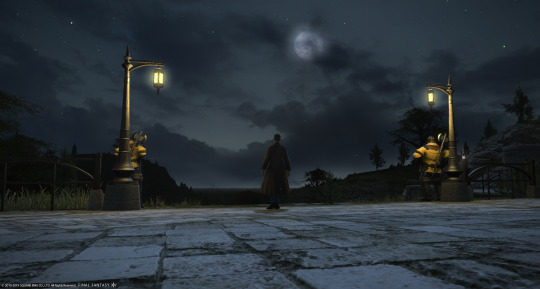
(Revised 9/21 for additional content, details, grammar, and Feng Shui.)
Officially it had no formal title, but in communique and common speech it was referred to as Company Hall. Among the officers of the Thursby Company it was often named Tondera Hall, for reasons none would explain when asked. Among the Scions company it was called the White Tree after the first sub-level which had been arranged into a spa by the same name. The spa was open to the public and frequently served recuperating company members. The first level held a service desk at which members of all companies, guests, and customers of the spa conducted business. A crafting, engineering space, which Ossimira Miegs seemed to dwell in all hours the night and day was behind the service desk. Scattered through the hall, in sub-levels under the main building, were quarters and rooms. Most were in the hill abutting the hall, others in the sub-levels along the ridge overlooking the nearby streams and lake. This afforded many rooms windows. Collectively the design also made the hall seem deceptively small as seen from it’s courtyard.
Benjimir kept personal quarters in Company Hall. Also, there were offices for the newly appointed business management gurus the Twinkinryker twins. A few rooms served as backups to their Thursby Company counterparts in Ul’Dah. Benjimir was in conference with his younger brother Bondermir in one such room. A plaque on the door identified it as AUXFLTOPS. The Auxiliary Fleet Operations room. There was next to it a similar room whose focus was caravans and warehousing related.
In the far end of the room was a large map on the wall. On the map were color coded paper icons representing company ships, convoys, anchorages and port slips. Each was pinned to the map with a small slip of paper naming each. Ships were labelled by class, origin, destination, mission and commander. Strings from the icons led to each ships destination on the map.
Two clerks, “up wellers,” Sammie and Adler, sat at the Watch Desk next to the map. They had a small Linkpearl box in front of them. The box was of Eorzean craft, intended to channel many links to it. Those paired links were in boxes aboard each of the ships on the map. As updates were received, the maps, ledgers, schedules and other information were updated there. In Ul’Dah an identical room, larger and more elaborate, replicated the effort. Which room actively took responsibility for “the watch” rotated. Today “Tondera” had the watch. Another set of rooms nearby and in Ul’Dah were similarly appointed and focused on caravans.
“Watch, Baxter. Arriving, Kugane slip 3, FSB 1251.” a voice said over the link box. Adler marked a log and spoke into the box. “Baxter, Watch aye. Time in, Fleet Standard Bell 1251.” Adler walked to a short step ladder in front of the main map and updated the marker for the ship and moved it to Kugane.
Benjimir returned his eyes from the Watch desk to the map he and Bondermir were standing in front of. His attention was drawn repeatedly to the older map on the opposite wall. A few years prior it tracked Company and Maelstrom vessels and points where battles had been fought in the Dragonsong War. None involved Company ships at that point. In the years since the current map in front of him traced points of contact and combat, mostly with pirates and the initial engagements with the Confederacy to the present day. Points of contact with Garlean ships were highlighted. There had not been any fighting since the previous war and little even then. The Imperial fleet had been scattered and unable to mass during the conflict.
“The Alliance wants nothing to do with it, but the sentiment in the ranks isn’t solidly behind their leadership.” Bondermir said. He pointed up at several places on the map. “There are skirmishes all along these Imperial zones of control, Ala Mihgo, and such.” he added. Each zone had one or more ports and shipping lanes traveled by Company ships.
“And we have business interests, caravans and Scions all over those places.” Benjimir lamented. “If this escalates and the Alliance is drawn into a fight involving the Empire we may have a difficult time avoiding contact this time. Our footprint is bigger now.” he said rhetorically as Bondermir knew this as well as any in the Company.
“Aye. It is aligned with our intents and interests to oppose the Imperials. If this continues to track along its current path the Alliance will get drawn into it. If they are pulled into a shooting war I don’t foresee how we avoid it either.” Bondermir said. Benjimir nodded his head and pointed to the areas nearest to the Imperials. The conversation paused.
At the duty desk the clerk picked up a small card and reached to another device next to the Linkbox. It resembled a childs toy, a small keyboard with six keys and a small speaker, set in a wooden box with gold painted decorative details. The clerk pressed a button on the linkbox which locked the transmission open then began to tap the keys on the new device. She pressed two keys like playing a musical instrument, each resulted in a different tones playing. She repeated this six times with two different keys each then spoke into the Linkbox. “Watch testing with Forrostar, Andustar, Baxter, Fairstar, Fairsea, Entulesse. FSB 1300.”
“We need eyes and ears out there. And everywhere else really. This is happening weather we or the Alliance wants it or not and we’re still treating this like a research project writ large.” Benjimir said, turning to his brother.
“Business ledgers, passenger manifests, field reports from the Scions don’t tell us enough of what we need to know. We have more shipping agents than intelligence agents. We won’t avail ourselves anything by being passive here. With the Twinkinrykers onboard now I’m naming you our Director of Strategic Information. I need spies Bondermir, a lot of them.” Benjimir said.
At the Watch desk the Linkbox squawked with a long three tone signal, which was assigned to the Company Hall. A voiced followed up as Sammie and Adler began to mark entries into their logs and close them. “Tondera, Ul’Dah. Tondera we stand ready to relieve you.” the voice said. Sammie leaned forward and pressed the key to talk on the Linkbox. “Ul’Dah, Tondera, we stand relieved.” A moment later the voice from Ul’Dah spoke again. “Tondera aye. All players, all players, Ul’dah has the Watch, FSB 1305, good day!”
Bondermir cringed at the identical twin Lalafells taking up much of his work over the Thursby Company but it was something long planned. “For both companies?” He asked. Benjimir shook his head. “No, only the TC. Keep this clear of the Scions of Numenor. We need them to keep their hands clean. Variance from that is at my sole discretion, is that understood?” Benjimir said with a stern look.
“Understood sir. When should I begin?” Bondermir asked.
“At once and with haste. I already feel a draft on our backside. Like we are missing something. Right now, we are the fly on the web Bondermir. The Empire is a ruthless but professional organization. An unambiguous risk to already know we are here or to endanger our people. We need to know not only what is happening but to guard ourselves from those that maybe watching” Benjimir said.
“It will be done.” Bondermir said. He looked at the center of the room. There sat the wargaming table. A prized possession and training tool of commodore T’subaki. It was a map of Haydaelyn’s Ruby Sea with an overlapping grid. Along the side of the table, arranged in neat rows were small model ships of unique design, presented from the waterline up. It was used to model possible engagement scenarios, plan and test responses.
“I wish there was a game for planning this sort of thing out.” Bondermir thought to himself.
*******
#ffxiv#ffxivwrite#ffxiv write#ffxivwrite2018#ffxivwrite2019#ffxivwrite2020#crystal rp#FFXIV crystal#FFXIV Screenshots#ffxiv crystal dc#ffxiv rp crystal#crystal-rp-ffxiv#crystal dc#ffxiv-crystal-rp#rp-crystal-ffxiv#crystal-rp-ffixv#ffxiv balmung#ffxiv rp balmung#scionsofnumenor#sonsofnumenor#Final Fantasy#finalfantasy#Final Fantasy XIV#Final Fantasy 14
13 notes
·
View notes
Text
love is not over
song: love is not over (full length edition)
first experience: what do we qualify as the first experience? the release in HYYH pt. 1 or the full length release on young forever? with almost a year in between the releases timing does bring about different memories for me.
the 2015 release of HYYH pt. 1 found me a few weeks after a rather terrifying trip to the emergency room with a diagnosis that would forever change my life - the way i live physically and emotionally. this album was the first album i experienced as ARMY. i found BTS through I NEED U, and quickly devoured the HYYH pt. 1 album in may. love is not over was a track that immediately stuck with me. i remember laying in the grass of my university quad, outside my dorm building, soaking in the sun - putting it on and smelling the spring air. it was tremendously comforting for me. i didn’t immediately look for a lyric translation, i didn’t feel like i needed it. i felt every emotion through the song without even knowing it’s true intended meaning. hindsight - i wish i had looked up those lyrics.
as for the full edition release in 2016, i was actually working in macau at time time as a researcher. i’d been there for about two weeks when young forever dropped. i have the funniest story about me running through the streets of hong kong, completely lost, in mad pursuit of the physical copy of the album. that is for another day though. (also plenty of fun stories of attending the HYYH epilogue concert in macau - i’ll include my horrible video of love is not over from the concert as well). i was so happy to see an extended version of love is not over on the album - i never could have imagined or anticipated it... it was such a delight. having the extended version was almost like what getting young forever was to bookending the saga of HYYH pt. 1 and HYYH pt. 2. i associate this song heavily with my experiences falling in love with macau, falling in love with myself in a way i hadn’t before, and falling head over heels with the world. a very difference first experience considering the low place i was in with the original release.
it is important to note that the extended version of the song adds in the rap verses for all of rapline, and offers us a very different conclusion than the original release (which was a source for debate among 2015 army for it’s place in the larger HYYH saga and the interesting *jibberish* at the ending of the song, more on this in the lyrics section).
feelings: lyrically, love is not over is a breakup song. it’s that kind of song where the singer is begging their significant other not to leave, not to say goodbye. it’s the kind of song you listen to after you get dumped. you’re devastated, the other person seemed perfect... whatever comes next for you, you can’t imagine that person not being a part of it. love becomes nothing but pain in that moment. you lament it. you beg for love to fade and fall away. but... in some ways it’s not. to me, in my view the song is also about one’s relationship with themselves. or at least i see it that way. the song isn’t so much about this one specific girl -- it’s about love in general -- it’s about how they’re upset at the fact that love is always pain for them, it’s goodbye after goodbye, there’s no stability, there’s nothing but pain. i’ll make this point in the lyrics section more clear.
it’s this very point that makes the song resonate with me. at this point in my life, and even now, goodbyes terrify me. i carry the baggage of years of goodbyes, those that were intentional and those that happened for reasons outside of my control. they’re damaging. they make you start to see love as pain. why let others in? why love? what’s the point if it’s all going to end abruptly. you’re left with grief, broken dreams, despair. i’ve been through even more at this point in my life than i had when i first heard love is not over. i should be hardened by the pain i’ve felt over the years. yet - i am not. not completely. i haven’t let bitterness taint me completely.
strangely, when i listen to love is not over, i can’t help but feel in love - the beat - something about the pure R&B sound of it, it’s the perfect build and smoothness, it sounds like what love would sound like (if in fact emotions could become sound waves). the beat is calming and smooth, never loud, never melancholy. the song makes me feel, once again, comforted - like even though i’m hardened, even though love is pain, even though it has the capacity to hurt, it’s not over - and it’s still an emotion that i long to feel and express to those who inevitably come into my life. the song makes think about how i’ll always have the capacity to love and accept love. even if there’s moments i go through where i want to scream that love is dead - i know it’s not, i know that i’ll always love again.
personal connection: i probably relate to this song in a way that very few others do. maybe i’m interpreting it differently, or perhaps it’s because for me, the song doesn’t map neatly onto a life experience for me - yet i still love it dearly and it’s brought me immense comfort. it’s not a song i cry to with the thoughts of a past relationship in mind. it’s more about my internal discoveries and my relationship with how i love, express love to others, and how i experience and process rejection and change in my life.
for me, listening to love is not over brings me to a point where i’ve realize that despite being a hopeless romantic i’m a complete cynic. i’ve taken all the personality tests, i know my star sign... among all of that i can tell you i am deeply idealistic and i live inside my head where i build fantasy worlds and scenarios, where i romance everything. i fall in love with the world around me one-hundred times a day. i’m deeply in love with my friends that i hold dearly close to me. yet, and probably because of these visions of grandeur, i’m often let down. i expect the fantastic, and when things fall short i’m hurt. to make matters worse i’m a deep devotee to the church of self-loathing. i know it’s all my fault that i put so much love and care into everything around me, everyone around me, so when things fail, when inevitably the goodbye comes, i place the blame squarely on my shoulders.
at the point that the extended version of this song came out i was in the process of falling in love with the very world around me. i was out of the US, experiencing something so new and foreign for me. a place that i quickly took in. a place that changed me, made me so much better. healed me to a point where i could leave a toxic relationship - without fearing that goodbye - the goodbye i feared far more was leaving macau, heading back to the states to start my masters degree. i wasn’t in macau for a long time but that experience, i fell in love so many times. not with people per say, but with feelings, with my surroundings, with a slower way of life. when it came time to say goodbye, it was like breaking up with a new life for me. i felt pain. i almost wished i hadn’t experienced a life where i was so happy - only to go back to a world where i had to confront the reality that was my life. the tatters i’d left back in atlanta.
when i came back home things weren’t as i’d left them. i was returning to do my master’s degree at the same institution where i received my four year undergraduate degree. nobody was there that had previously been. i felt abandoned, i felt alone, the love i had in my heart both for a foreign place that was now out of reach, but also for the friends that my university had previously held, hurt. it was pain. i longed and yearned for those places, times, and people yet again. so much so that i hurt myself in the process. i spent nights alone with my wine bottles and emotions. it took a while to get out of the place i was in, but i did in fact love again - love wasn’t over. i learned to fall in love with new people, fall in love with the old in a new way, fall in love with my dreams. for me, love is not over is almost like the story of learning to love yourself, learning to love how you love. and not just in a romantic way, but how you love more generally. if the song were meant to only speak to intense romantic relationships why would namjoon’s verse allude to the shallowness of the relationship at the heart of the song? for me -- i’m still learning how to get back up when love becomes pain, how to recover from putting love into the world and not always receving it back. love is not over. it’s a process. it’s always with me, even if it’s not always returned. even if it’s not always right. it’s there.
song breakdown
musically: i would like to make the assertion that the full length edition of love is not over is one of bangtan’s best songs. every member’s performance shines through, it’s a perfect dramatic ballad song but the rap verses perfectly complement the perfection of the vocal line portions of the song.
the slow and soft start with the piano - it fits the mood of the lyrics perfectly. the way in which the harmonies work together to highlight the emotions of the song. stunning. the introduction of the drum beat at the chorus and the R&B undertrack that runs from the chorus through the rap verses is soothing ~ it picks up the mood completely, infusing the song with hope. the playful beats throughout hoseok’s verse which go in time with “stop” and “dot” it’s complete genius. the melodic backing track that picks up with yoongi’s verse is unexpected but completely complements his increased rap pace. the return to the slow for the bridge as we get the upper-ranges of vocal line... it’s hard to put into words how *perfectly* produced this song is. and -- produced by jungkook. i believe this is his first producing credit, and what a song for it to be. it’s genius in every way. in the outro: version of the song jin is also credited in production and songwriting. it seems that this duo are R&B geniuses along with slow rabbit.
the smooth pick up of the beat - it’s classic R&B at its very very very BEST. the asian style is not something to be skipped as well. there’s clear elements that are echoed throughout the entire HYYH series. the song feels old school, nostalgic for some kind of 90s R&B but with the new twist to it. it fits the mood completely, wishing and longing for something that is now in the past. the song builds around the choruses and in the rap verses, expertly moving the emotions of the song along. much like the song is kind of about the ups and downs of love, the loss and the hope, the ugly and the beauty, the music matches this with it’s changes in tempo and sound. but it’s not overwhelming at all. love is not over is smooth - incredibly so - and it is the kind of song you can put on when you’re down, when you’re up... something about that makes it a complete masterpiece and a never skip.
vocally: i don’t have too much to say here other than love is not over is an OT7 song that showcases the talents of both rap and vocal line beautifully and equally. the balance in the song is one of my very favorite aspects of it. it’s not heavy on either side - we get the raps and we get the beautiful crooning - it’s a masterpiece in songwriting and production. it’s a masterpiece in performance. jungkook’s beautiful higher range is showcased in the opening of the piece and leads off the chorus and is felt throughout with adlibs. taehyung’s velvet lower register often follows jungkook in a beautiful contrast - offering us a soulful sultry sound. then jimin and jin take over and moves the song into the chrous with their beautiful high-registesr. jimin builds the prechorus with power, which then is sung line by line and beautifully with all four voices complementing one another. vocal line harmonizes with one another throughout the song - offering plenty of stunning ad libs as well.
rapline brings emotion and pain to the song with slower tempo raps in the second verse, started by namjoon and concluded by hoseok. namjoon’s gentle rap voice delivers a sense of understanding and comfort. meanwhile hoseok follows him up with a soulful rap, playing with the beat and building into a pleading tone at the end of his verse. the final rap verse is then taken by yoongi - he starts off slow and building to a more quick rap pace, adding in more emotion and bleeding in to jungkook’s crisp delivery of a modified bridge/final chrous. both jimin and jungkook provide several heavenly high notes throughout and the piece is ended with the solemn repetition of love is not over. it’s stunning, the vocals for all members truly shine in love is not over - there is no dominance, and the song makes for the perfect showcase of the group’s total talent.
lyrically: jungkook is listed as the primary songwriter for love is not over, but he was assisted by jin, pdogg, slow rabbit, and rapline contributed their own raps. i think it’s important to note because jungkook was only 18 at the time of the full length release, and even younger likely when he wrote the song. impressive.
now - onto pulling this masterpiece apart completey.
the slow and beautiful start to love is not over is grounded in a feeling of time passing, time flowing, as one sits through a “long night” that they can’t seem to escape. offering us both a headspace we’ve all been familiar with - sitting alone in your room late at night pondering life - and a feeling of something quite dark, the long night that going through a hard time can feel like. the lyrics then move to ask “why are you getting farther away? / so far that i can’t reach you?” these lines are clearly calling out to someone that was at one point very close with the speaker - a lover, perhaps a close friend, an emotion, a past identity... the options can be endless. it’s like as in the previous line, time is fading away, everything is going dark, and so is the relationship at the heart of the song. the song then asks “can’t you see me in your eyes anymore?” the line almost begging, what has changed, why am i no longer someone you consider, no longer someone you’d like to have in your space? in your view? it’s crushing. the speaker can sense the relationship and the other pulling away, their once held affections and desire melting away to darkness - to a lack of presence.
the song then moves into the chorus - almost a chantlike chorus which brings more emphasis and importance to the words. the lines begin: “love is so painful / goodbyes are even more painful.” beautifully outlining that opening oneself up to love, that vulnerability, it hurts - and when loves walks away from you, when the goodbye comes inevitably it’s even more crushing than the initial feelings of fear, anxiety, the nakedness that comes along with falling into love. “i can’t go on if you’re not here / love me, love me / come back to my arms” the speaker begs, pleads, feels completely powerless losing something so precious. when juxtaposed with the title of the song - love is not over - you begin to wonder, perhaps these words are just that? they’re words. there’s ultimately a piece of understanding that love is worth the pain and struggle, there is a hopefulness to this song, but we can’t find it in the chours.
the piece then moves into namjoon’s rap - lyrically powerful and delivered with nothing but raw emotion. he starts off telling an intimate story “you said goodbye to me / every night before i went to bed” emphasizing the closeness of the subject to him -- “i hated that even more than dying / it feels like this night is the end of you and me.” he laments those goodbyes, he’d rather have stayed in those beautiful moments, full of love, full of promise. instead things have gone dark and they’re ending now - the longest night has begun, with a simple “goodbye.” despite having emphasizing the closeness of the subject to him, namjoon then calls into question that “i don’t know you, you didn’t know me” perhaps he says this as an explanation, if they’d truly known one another then they’d have worked things out. made it all okay again. there’d have been no goodbye. it’s the realization that perhaps he’d been in love with someone he’d create in his head all along. he then moves along to say “you’re like hello and goodbye / at my beginning and my end / there” emphasizing that things with the subject had been up and down, all over the place, bliss and pain. this goes back to the statement about love being pain, it’s something the speaker wants desperately, yet it’s causing them pain? thus emphasizing the volatility and absolute confusion that happens to our emotions when they’re tangled up within another.
hoseok’s verse follows with its own beat and style. he emphasizes the separation in the first two lines “everything stopped like our red light / stop” and “nothing more to say, it ends with my tears / dot.” clearly he is drawing a line here, there’s no need for any more interaction between the two. it’s over. which in many ways contrasts with the begging nature of the choruses. which leans me to be inclined to think that this song is more about being in love with the emotion of love, a yearning for the emotion and feeling of love rather than a specific person that didn’t even know you. hoseok continues “i’m not okay i repeat this denial / recite, if you can recite my mind” asking the subject to recognize his emotions, his feelings towards concluding their relationship. “you are my endless love and my girl” the verse finishes out. bringing us back to the true story at hand, but not taking us away from the idea of wanting love for the overall feeling of love rather than for a specific person.
the chorus repeats once again, then we are brought to yoongi’s verse. the emotion builds both in the sound of the song but also lyrically. hope is infused throughout this verse following strongly after more sad toned lyrics previously. he starts off “i always smile at you / even the love is a tragedy for me.” this line makes me think that the speaker recognizes that even if things are falling apart, there was something beautiful about being able to feel at all. that’s a major theme throughout the HYYH series. feeling, experiencing, not necessarily for the sake of others, but for the sake of exercising your youth, for growing, strengthening and building yourself. this part of life is the perfect time for it. “i always cry after it’s over / farewell even though it’s a comedy for you.” yoongi recognizes that the other party doesn’t carry the same emotions as him, it’s completely the oppostie for them. “yes nothing is everlasting / i live without you even i feel like dying” while not exactly hopeful, this line does contrast with the other lines about not being able to go on - yoongi specifically uses the word “live” he goes on, life goes on, he will continue to experience and it is at this point in the song where the first utterance of the song title is made. “over, over, love is not over” emphasizing that even if this is over, love lives on. it might be pain, it might be an unpleasant emotion, but it continues. finally yoongi ends his verse with a plead “please take me out of this endless maze” signifying that he finds the interactions with this particular type of love, or person, or moment in his life confusing and disorienting. but the thing is, mazes have exits - there’s a change he’ll find his way out and onto whatever is next.
the chrous repeats one more time before the song in concluded with the beautiful chants of “love is not over, over, over” flipping the way in which yoongi uttered the line - ending with the word over. offering hope to the listener. the chant urging the speaker to believe their own words. there is a change, love is not over. it will happen again and again - “over and over” as the lyrics provide through the repetition of the lyrics. it’s understated but it’s a powerful message of hope, cycles, and avoidance of a true end.
performance: you can easily find live performances of love is not over, most notably from the EPILOGUE in JAPAN concert. i also attended the HYYH EPILOGUE concert, but in macau back in 2016. i was really fortunate to experience love is not over performed live. i’ve uploaded the video here for you all the enjoy. please don’t mind any screaming you hear, i was clearly beside myself. i remember the emotions i felt hearing the song live - the vocals were pristine, the emotion in each voice was on display, the stripped down live band backing was beautiful. everything about the performance screamed emotion.
all seven bangtan members were seated on stools, dressed in black jeans and white blouses. behind the members a beautiful HYYH logo was lit up with the signature chain-link fence print. the beautiful understated nature of the performance amongst a sea of high-energy performances including baepsae, save me, I NEED U, and fire... the contrast was enough to make every ARMY at the show completely transfixed. did i cry? maybe. did i cry with a strange girl i’d met off of twitter only hours earlier? ...okay i’ll be honest - i really did. the song is powerful just as a track on an album, but experiencing it live, or even just watching the performance on youtube -- it’s powerful. the talents of these men are on full display, both rap and vocal line are able to highlight their abilities beautifully.
tl;dr: love is not over is beautiful. it’s an earlier bangtan song, and it’s earned its place as a complete classic R&B bop. the sounds of each member’s voice, the lyrics, they’re melodic and soothing. the song is about heartbreak, but the interpretations in the context of the greater HYYH saga make it hopeful. love is something we often associate with youth. falling in love with others, ourselves, and our world - it can be painful... especially when we’re young and we realize that things aren’t always as we percieve them to be. but it’s all a part of learning. we will love again, and love isn’t over. it’s a cycle.


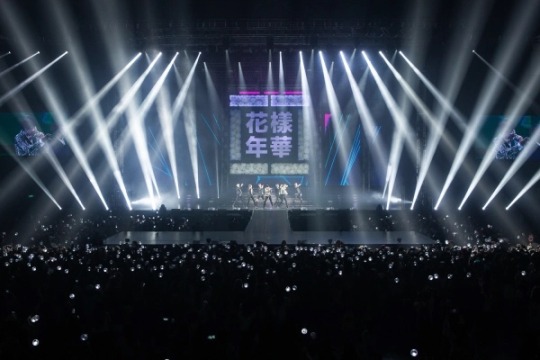
2 notes
·
View notes
Text
Lesser Known Black Hole Misconceptions
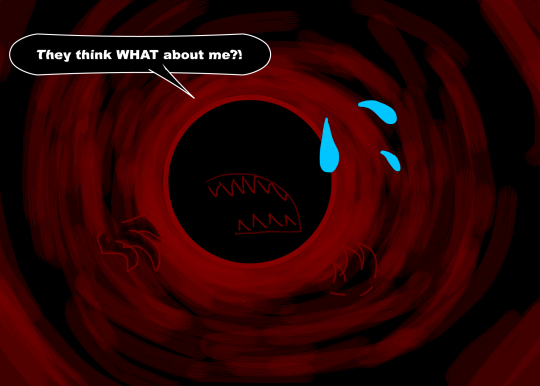
During NASA’s Black Hole Week I saw a lot of social media posts, press releases, videos etc. that were not really correct.
One big issue with science communication about black holes is that while it has gotten good at dispelling the trivial myths (like “black holes suck everything into them and so you should be afraid Sgr A* will kill us all”) it has perpetuated other myths that require more detailed knowledge of general relativity and astronomy to debunk.
I thought it would be interesting to go over some of these misconceptions...
Myth: Stuff that falls into a black hole appears to freeze just outside the event horizon from the perspective of an outside observer.
Reality: Stuff that falls into a black hole disappears from view quickly.
People who perpetuate this one usually say it’s because time dilation makes the stuff appear to stop moving. But time dilation also causes the photons released by the object to be redshifted, and for fewer photons to be released with each moment of time. The end result is that the stuff will get exponentially fainter, and become invisible to your eyes.
Myth: You can’t escape the event horizon because the escape velocity is the speed of light.
Reality: You can’t escape the event horizon because no paths through space-time lead outward.
This myth is technically correct...but insufficient. It is possible to escape an object with less than its escape velocity if you continuously apply a thrust. This is in fact how rockets are launched from the Earth. If escape velocity = light speed were all there was to a black hole, then you could escape a black hole with a strong rocket.
But you can’t. For once you cross the event horizon, all paths through space-time are so warped that no paths lead outward. This is the true power of a black hole: the curvature of space-time is such that nothing inside can ever causally affect the outside.
Myth: A singularity is an infinitely dense point.
Reality: Singularities are where space-time is incomplete.
This one is a really obscure misconception. A lot of people say infinite density is what defines a singularity, but technically it’s something called “geodesic incompleteness.” Basically a space-time contains a singularity when paths through it abruptly come to an end. The singularity isn’t really an object in space-time so much as an edge to space-time itself. Approach a singularity, and curvature increases asymptotically to infinity and space-time itself ends and you simply cease to exist.
For this reason, a singularity can’t really be an infinitely dense point of stuff. As far as classical general relativity goes, stuff that falls into a black hole is destroyed at the singularity.
It is often thought that a true quantum theory of gravity will replace the singularities with something else, but for now, the singularities represent where we cannot tell how space-time continues beyond.
Myth: The singularity’s gravity creates the black hole.
Reality: Black holes are self-perpetuating.
Once an imploding object collapses into a black hole, forms an event horizon, and destroys itself in a singularity, it’s gone. The rest of the Universe doesn’t even know it ever existed. But its gravity continues on, because the curvature of space-time created in the process can create perpetuate itself due to the nonlinearity of Einstein’s equations. Essentially a black hole is pure gravity. The singularity isn’t some solid object that curves space-time to create the black hole; the curved space-time is the black hole.
Myth: Black holes are very dense objects.
Reality: Black holes are empty space-time.
This is related to the preceding myth. Black holes are vacuum solutions to Einstein’s field equations, and don’t have any matter anywhere save for what’s falling into them at the moment. Their mass comes from the ability of gravity to source itself.
You might think that at the very least you’d need a very high density of matter to make it implode in on itself and create a black hole in the first place, but this isn’t necessarily true either. You could make a supermassive black hole just by filling a solar system with regular density water.
Myth: A black hole’s internal radius is its Schwarzschild radius.
Reality: A black hole’s internal radius is not well defined.
The Schwarzschild radius is the radius of circumference of the event horizon for a non-rotating black hole, and is very famous because it is easy to calculate. Many people assume that if it is the radius of the event horizon, then it must also be the distance from the horizon to the center of the black hole, like the black hole is a spherical volume.
Unfortunately, this neglects the fact that space-time inside a black hole is extremely curved. In fact, it is curved in such a way that the distance to the center of the black hole is not well defined. It is time dependent, and changes depending on your choice of coordinates.
Curved space-time is really difficult to get your head around. Visualizing curved spaces in flat space-time is simple enough, but curved space-time itself? It messes with things we find sacrosanct, like distances and volumes, and it’s impossible to map it all onto a single coordinate system. It’s not like those “bowling ball on a sheet” analogies you often see...it’s something far more complex and abstract.
Myth: Black holes kill galaxies.
Reality: The jury’s still out on who did it.
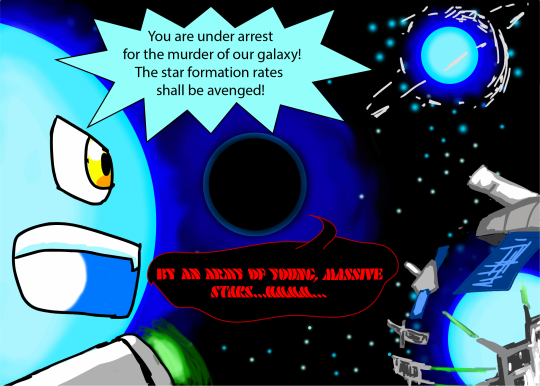
This one is just an oversimplification I see a lot in popular science media of the phenomenon known as “AGN feedback.” The simplest version of the idea is that supermassive black holes drive powerful winds and jets that drive the gas out of their galaxy and shut down its star formation.
However, the current evidence suggests the picture is a *lot* more complicated, with many galaxies not suffering this problem at all, and the galaxies that are often thought of as having been ‘killed’ in this way (the giant ellipticals) may not have been ‘killed’ solely by their supermassive black holes. It’s still uncertain how much AGN feedback played a role in quenching star formation versus major mergers, minor mergers, or even the stars themselves blowing out the gas and choking off their own formation (like through supernovae and stellar winds).
(Also this should be clear, but when astronomers say a galaxy is ‘dead,’ the galaxy and all its stars and planets still exists! It just isn’t forming many new stars anymore. Supermassive black holes still won’t kill you.)
Myth: Quasars are powered by black holes shredding and devouring stars.
Reality: Quasars are powered by black holes accreting gas clouds.
I’ve seen many people (some of whom are [astro]physicists and should know better) state that quasars are powered by supermassive black holes that are shredding several suns every year. In reality, this isn’t what’s going on. In the center of a galaxy, everything’s moving very fast, so objects need to come close to each other and lose angular momentum to each other to fall into the black hole. Stars are compact and so don’t really get close enough to interact strongly with each other. Gas clouds are much larger and are able to collide with each other, canceling out their momentum and allowing them to fall into the black hole.
As such, while they’re famous for eating stars and planets, most of a black hole’s diet is gas and dust. In that regard, they’re kind of like predators maligned as man-eaters, like sharks.
Myth: Heavily accreting black holes always launch big jets.
Reality: Some don’t!
One weird thing that scientists have learned from studying variability in stellar black holes is that jets seem to be most prominent in low accretion states. At higher accretion states, the jets at first get more powerful, but eventually they break up into blobs and become a broad wind instead.
Supermassive black holes do not vary on short enough timescales for us to really see jets turning on and off, but we can observe the population of actively accreting supermassive black holes and try to piece together a progression of accretion states from that. Drawings of quasars always show them with big old honking jets spewing out for many light years around, but it turns out many (perhaps even most) quasars don’t have observable jets! It just so happens quasars were first discovered in radio waves, and the only quasars that are prominent in radio are the ones with clearly visible jets.
Most supermassive black holes with prominent jets are in radio galaxies, which aren’t accreting at high rates. Some think that the minority of quasars which are radio loud might represent the supermassive equivalent of the transition state observed in stellar black holes.
However it is entirely possible that the quasars that don’t have jets do indeed have them, it’s just that we cannot see them because they are pointed away from us. This is still an active area of research!
---------------------------------------------------------------------------------------
This may be confusing but honestly, I like science so much in part because I love all the nitty-gritty details and picking apart and over-analyzing stuff. Oh well...at least you can enjoy my dumb black hole comics. ^_^

#science#space#astrophysics#physics#astronomy#black holes#black hole week#misconceptions#science communication#belated black hole week post#education#galaxies#quasar
296 notes
·
View notes
Text
Odyssey to becoming a Published Author
(Note: with Odyssey being in the title, this is quite a long post. The link to the facebook page that leads to where my novel can be bought from can be found at the bottom of the post, as can some of the initial artwork done)
So, despite never been a ‘blogger’ per se before, I’ve decided to write this article about my journey from having dreamed about writing and having my own works published, through to actually writing my ideas up and publishing them myself, as I’m sure that there are many an indie author and authoress out there who can relate and have been through the very same journey I have.
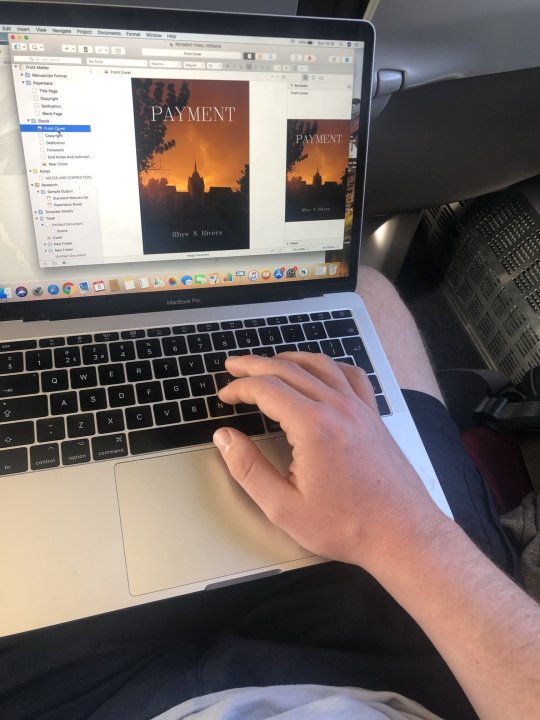
First thing’s first. Rhys N Rivers is not my real name. It’s a pen name. There’s something in being anonymous when it comes to writing, almost like a sense of freedom. This day and age of social media means that almost everything we do is recorded somewhere on the internet, and an opinion or action from ten years ago can be drudged back up to be ridiculed by the Facebook jury and/or the Karens of the internet, in line with the fashionable opinions of the day. A pen name grants anonymity and to some degree, security. The only people who know my identity are my immediate family and a few close, trusted friends.
When people embark on a new venture; be it a new hobby, learning a new language, travelling the world, changing jobs etc, the journey actually begins long before said venture starts. Quite often, the journey always begins in the classroom, at home, in bed, in daydreams. It begins as a state of ambition. A plan that one day, will be put into action.

My authoring journey was no different. Mine actually began around the age of eleven. I was of the Harry Potter generation where I was the same age as the main characters in the early years when a new film came out each year. J.K. Rowling got me into reading beyond in school, and I - being one of the cool kids, clearly - read a lot throughout my early and mid teenage years. It was admittedly predominantly fantasy based, (Tolkien, Pratchett, Philip Pullman, Garth Nix) or Bernard Cornwall’s historical works before I branched out into people like Wilbur Smith and others. When I was around 14 or 15, Dan Brown’s The Da Vinci Code took the world by storm and I also ended up reading all of his works. School provided a sophisticated reading list, which included Dickens and Golding, and so growing I had read through a rich and broad variety of fiction.
Where actually writing was concerned, I think it was about the age of eleven or twelve that I realised that I wanted to write properly. I think it was actually after reading William Nicholson’s Wind Singer when I decided, and I set to task in writing coming up with a fantasy novel. I didn’t start writing the plot straight away; I actually started coming up with characters and places, even drawing out a world map. That was really fun to do. It had a sense of total control to it. What I decided was what things were. Where a kid may not feel in control of things in other parts of life (insecurities of school, friends, growing up, relationships etc), this was something totally different. The ability to create your own fictional world, in whatever genre you go for, is a form of escape and release in which you can develop your talents and ideas.
There were lots of elements to what I was planning out - which included ideas from Star Wars, Lord of the Rings, The Legend of Zelda, The Wind on Fire among others. To be honest, I’m actually glad that ‘project’ didn’t get very far. Poor Christopher Paolini, the author of the Inheritance Cycle quadrilogy of books, was slated by certain groups and reviewers for his alleged lack of originality and using of ideas from other stories. In Paolini’s defence, he was only fifteen when his first book was published, which is something that most fifteen year olds don’t achieve! But I think that had I completed mine, it might have faced the same criticisms - not necessarily from reviewers or publishers, but perhaps friends and family reading through it first.
School, in particular, provided me with a lot of enthusiasm and inspiration to write (clearly, I was one of the cool kids). My GCSE English teacher was a great bloke (probably still is) and gave great, honest and constructive feedback to the entire class’ work. Our first piece of English Literature coursework was a piece on creative writing and I elected to do a piece on the topic of an opening chapter/opening chapters to a novel. Having just read Dan Brown I did my piece in his sort of style: bloke copping it at the start, trying to prevent some conspiracy from going ahead, then the reluctant hero of the story gets dragged in to solving it. My piece didn’t revolve around religious groups or secret societies, but around a historical artefact.
Out of 54 marks, this scored 52. I was more than happy with that. I had no idea where the story was going to go but I was determined that I would one day finish the story. To this day, I still have no idea where the story is going, but I am certain that it will be the last novel of a set of three, dragging the main character, a desperately-can’t-wait-to-retire detective, through painstaking research, learning about history that he wouldn’t usually be arsed about and running away from people, of whom he’s becoming more and more of an embuggerance (word-invention credited to Terry Pratchett) to.
For some reason, I really can’t remember why, but about a year later the option was given to my English class to rewrite that piece of coursework (we were about four out of five coursework pieces done by that time). I was of course happy with my score but I saw this as an opportunity to try something new and see what ideas could again come spewing from my mind.
This time, again sticking with the opening chapter(s) option, I wrote about a start of a medieval conspiracy, beginning around the Battle of Crécy and going…err…I still have no idea where! But this piece resonated better than the previous piece, earning full marks from my English teacher, along with the comments “…should come with an 18 rated certificate.” Again, I vowed that I would complete this story one day and see it published. This one I think I will try to make into a three-book story.
The summer after completing my GCSE exams I did the normal stuff: went on holiday with family, chilled out with friends, even attended the World Scout Jamboree that year. But I also by then had a set of ideas in my head that I wanted to turn into novels, and wrote that list onto a computer, and saved it to my USB memory stick. I have no idea where I last saw that USB stick…
After I left school I joined the British Armed Forces. I’m not going to write too much about what I did, where I went etc (not because I was part of some uber-top-secret unit, but more-so that it just doesn’t contribute to this post) but my priorities changed. I read a lot less and writing properly in the near term future just was not a possibility, or something that I wanted to concentrate on at that time.
In early 2017 I was considering a career change, and during that time I joined fanstory.com, under my real name. The purpose of doing this was to put myself into an environment with other amateur writers, gain inspiration from other budding authors (and hopefully give some inspiration back), and be in a place where my works could be read among ‘peers’, giving me a good steer on things.

It was on this website where my first novel, Payment, was conceived. There was a competition going for short stories up to 7000 words long in the horror genre (“Put your readers on edge or terrorize them”) and so I thought this was a good place to test out to see what people think and to develop my writing style.
It took me a couple of weeks to put Payment together and submit it. I had never considered writing horror before but this, again, was an ample opportunity to try something new and see what I could come up with. I decided to go with a 19th Century narrative; much like Mary Shelley and Bram Stoker. I prefer to think or the horror genre as the old neo-gothic styles of writing - the old ghost stories. Horror, in recent years, both in writing and film-making, has taken more of a gore and shock factor turn. Personally, I think that will turn horror more into the thriller genre. To me, horror should be about ghosts, vampires, witches - the occult and the supernatural. And that’s that I have tried to achieve with Payment.
What surprised me the most during the writing of this were my decisions to use the first-person narrative - something I used to despise growing up, and the use of a one-word title. For some reason it used to bug me no end that it was becoming more and more common that artistic projects, be they novels, films, dance, visual art etc, would use one-worded titles. I used to think that was a cop-out. But here I am with Payment - a novel told in first-person narrative…
I have always thought that my writing style was/is closest to Terry Pratchett’s. I’ve never tried to emulate him but his style of using irony, dry humour and satire, whilst also plummeting to some very deep philosophical ideas. But I couldn’t do that whilst writing Payment. The thing is with writing horror, is that you have to be able to maintain that macabre atmosphere all the through. That actually isn’t easy. I found there always has to be a sense of the character’s isolation, a sense of doom and gloom, and a sense of something about to happen.
I didn’t win the completion that I entered. I don’t think it even made the top three. The votes are cast by the other entries’ writers and maybe a few other people. I can’t remember if you could vote for your own project but I think you could. The entries placed above mine, although I thought their storylines familiar with ideas already done, were admittedly much easier to read than my entry. A 19th century style of writing will always lose to simplicity when people have a number of works to read.
But that didn’t deter me. I’d created a fictional work and was determined to show it to the world. I didn’t go ahead with the career change at that point but decided to fully review Payment, at get it out there as a completed project.
Fanstory is a good platform, it really is. I’m not sure why, but after only a couple of months and having written a few competition entries, I came to stop writing on it. My old job was getting in the way and to be honest, I was getting impatient with writing on it. I had the mentality that I wanted to be published right now sort of thing.
A couple of years later, I did go ahead in a change of direction career-wise. This provided the opportunity to fully revise Payment and make it into a ‘novelette’, more than 7000/7500 words but fewer than 17,500. I would then prepare it for editing, get the artwork sorted and then publish it online for maybe a couple of quid.
I was actually in Tanzania at the time when I thought that Payment had been expanded enough to put out as a novelette. Once I’d finished writing, I showed it to a couple of the volunteers I was working with and they both enjoyed it. Although I was pleased about that, I still wasn’t satisfied with it. I had touched on quite a few themes in the work but I don’t feel like I had explored them all as much as I could have. Although complete, it felt very much incomplete. At the same time I wanted to expand the work into a full novel and also I didn’t - mainly because of the challenge of maintaining that horror atmosphere.

I decided that, in order to put more meat onto the bones and develop this short story/novelette into a full length novel, I needed a goal to work towards; something that has an end achievement that will make me work to expand on what I had already done. And so I set about looking for horror writing groups and/or competitions on the internet.
In not much time at all I came across the Horror Writers Association (HWA). They are a group that cater for all things horror and occult in fiction. There, you can advertise your works, read or recommend other people’s works and learn about events - namely the StokerCon.
But what attracted me to them the most was their sponsorship of the Bram Stoker Awards (“for Superior Achievement”). These are awards that are given out to authors and authoresses who have had their works judged in certain categories. The one that has caught my eye is the ‘First Novel’ category. A quick reading of the rules informed me of the minimal word limit: 40,00 words. Perfect. There’s something to work towards, with a chance at winning what is described as ‘the Oscars of horror writing’. When I returned from Africa I set about the task of bolstering a 17,000-ish novelette into a 40,000 word minimum horror novel!
I have read Edgar Allan Poe in the past, and even bits of Mary Shelley. For more inspiration in keeping that spooky, Neo-Gothic atmosphere, I read some parts of Bram Stoker and H.P. Lovecraft. Despite all of that, I initially found it difficult to write again on the same piece of work that I started almost three years previously. It was only after reading Susan Hill’s The Woman in Black, where I became inspired by her power of description to turn chapters, paragraphs and sentences that belong in quick short stories to ones suitable for a long read.
In January, this year, I had finally finished. I expanded heavily on the ideas that I was before concerned that I was rushing through and before I knew it, my word count was well over the 40,000 words I wanted to achieve! I read it all again myself, edited out any spelling or grammar mistakes that I had seen, and sent it out to beta testers (readers) for opinions and editing.
Following the last edit - of which there wasn’t relatively much to do - my debut novel stands at a word count of 53,850 words! That isn’t considered very long by today’s standards. To give a point of reference, Harry Potter and the Philosopher’s Stone is estimated to be around 77,000 words long (depending on who is doing the word count). But my novel is longer than The Woman in Black as well as other novels such as The Great Gatsby and The Hitchhiker’s Guide to the Galaxy, and considering it came from a short story of 7,000 words I am still happy with it.
Concurrently with writing the novel came the task of finding an artist/illustrator for the cover. That was a more difficult task than I expected.
Not only did I want to find someone who could create a suitable cover, I also wanted that someone to be able to do ‘scene art’; by which I mean a picture at the start of certain chapters. The reason for this is that I see a completed novel itself as a form of art, and scene pictures add to that completed projected. In fact, I actually wanted a sort of teamwork between the writing/art found in the Edge Chronicles books by Paul Stewart and Chris Riddell.
I combed Facebook for a very long time, joining all sorts of groups and pages for amateur artists to show off their works, hoping to find someone who I thought was suitable for my work. To my dismay, there was very little, I thought, that I could go off.
Around October time I put an advert on a freelancing work website, just for an idea of who else is out there and possibly able to take this up. I did receive a fair few responses but, again, there wasn’t really anyone whose work suited what I was after. A couple of them, one of them being an art company based in Central Asia, actually got quite nasty about it. They were expectant
It was when I was on a course in Spain that it was suggested to me to look on Reddit, as Reddit “literally has everything on it.” I had never actually been a proper Reddit user before; I’d clicked the odd link from Facebook but had never really interacted with it before.
The guy who suggested Reddit to me was right - Reddit has literally everything on it. There’s so much information to be found on so many topics it seemed unlikely that I wouldn’t find what I was looking for on it, and so I combed through a few sub-reddits dedicated to (freelance) artists and checked some of them out.
So I once again posted out an advert looking for artists and this time the response were much more positive, and enthusiastic! It really was quite uplifting to see and hear from so many people who were interested in taking up the project and I received so many messages. Everyone who commented on the post and/or messaged me with links to their portfolios, I checked out their work. I honestly don’t think there was a single person whose works of art that I wasn’t impressed by. There is so much that can be found at deviantart.com and artstation.com and so much talent to be viewed and be in awe at! Everyone who directly messaged me got a return thanking them.
One of the people I got talking to was a young lad from Sweden called Daniel Percy, whose artwork I also checked out. My preferences came down to him and another guy from Germany, and after speaking with Daniel he agreed to take on the work.
Daniel does a lot of freelance art work, predominately doing concept art work for electronics companies (I want to say video games but don’t take that as gospel), but he still found the time to do this properly, compiling several drafts of the cover and inside sketches. We collaborated quite often on what to change, ideas to put in etc.
The finished artwork is incredible! I’m showing some of the initial first-sketch ideas here along with the final book cover, along with a couple of since-altered scene pictures, just for an idea of his talent. You’ll have to buy the book to see all of the finished sketches ;)
And the final thing to think/worry/mull over until stupid o’ clock in the morning, was the publishing aspect. Luckily, ever since I’ve thought about writing (as an adult), it has become increasingly easier to get your works out there. The rise of the internet and social media age has made self publishing so much more accessible, and that is the route I have gone down.
At first, I wanted to go down the traditional printing route. I - again showing cool I was as a kid - always liked the idea of a fresh and printed book in my hands. But, there are two reasons why I haven’t done this:
The first one is environmental. Even before the climate change debate became a fashionable thing to signal your virtues about, I was uncomfortable about the idea of trees being cut down for my creation, unless I could be 100% certain that exact same area would be immediately replanted. It’s true, there are forested areas specifically for this kind of thing but the amount of bureaucracy involved, along with the middle-men, wouldn’t make it an immediate thing.
The second reason is that the majority of writers who send their works in get rejected by so many publishers. Yes, people refer to J.K. Rowling’s story of being rejected twelve times (and again later by one of the same publishers when she first wrote as Robert Galbraith) before Harry Potter became a hit, but as the option of the internet is there, it makes sense to negate that possible rejection. In the event that my works do get noticed and attract the attention of publishers, then great! But if they don’t, at least by online publishing, I’ve still achieved putting my novel out to the world.
Finally, today, Friday the 13th (intentionally - it is a horror novel after all ;p ) of March 2020, I officially became a published author. It is a fantastic, monumental feeling. My story, my novel, my creation, is out there for people to buy, read and hopefully, enjoy.
If there’s any advice that I can give for anyone aspiring to be an (indie) author, it is this: just write your ideas down. Sounds simple, if not downright obvious, but it really is incredible that so many people don’t achieve their dreams or aspirations simply because they don’t do them. The world of authoring and indie writing is so much more accessible now than it was even fifteen years ago, that is takes a great lot of effort not to find at least one platform to get your works out onto.
It is also incredibly easy to find every excuse in the book to not write at all. School, work, family etc, being the big ones, and they are legitimate reasons. But they are only obstacles themselves to an extent, before you yourself make them obstacles. Start small. Set yourself half an hour on an evening. No more, no less. Half an hour to start getting your ideas onto paper and then after a week, you’ve spent three and a half hours writing. You’d be surprised at how much you’ve achieved after three and a half hours of concentrated effort.
If you need motivation, there are plenty of people out there, particularly on the internet, who give great examples of motivation that apply to all disciplines. Joe Rogan, for just one example, has plenty of people on his podcasts who talk and give advice on self-betterment, and it can apply to anybody. If you want to write, you will find the time and means to do it. It doesn’t matter how long it takes; everybody finds their ways at different times.
As to my next works, what am I going to be writing next? Well, shortly after writing Payment as a short story I thought of another idea to write about, and use that particular project to actually develop my writing style. This next one, of which the first ‘act’ as such does already have a skeleton outline to it, is a light hearted yet philosophical at times medieval adventure, combining humour and seriousness together. I’m not going to divulge ay more information the storyline because, although it’s a simple idea, I believe it’s one that no-one’s done before and some smart-arse with more time on their hands than I can easily bash something together using my idea!
The school coursework pieces? They are still on my ideas list and will no doubt be developed into their own proper projects and they hopefully will also be published just as Payment is! The fantasy that I started aged eleven? Absolutely no idea. Whilst I would certainly like to do fantasy, going for originality is going to be difficult, as the standard format (young hero finds out he’s the ‘chosen one’ and goes on a long quest) has been done to death, as have a lot of fantasy ideas already. George R R Martin had the idea of using the idea of old English houses warring against other in the past, and that was used to great effect even before he threw in the ice zombies! So that one is going to be a case of properly allocating some time to sit down, think and decide how I’m going to go about, but make no mistake, I will go about it!
Thank you all for taking the time to read through this! I hope its provided at least some entertainment or light (ha!) reading, and I hope you’ll feel interested to buy my debut novel!
My Facebook page can be found at:
https://m.facebook.com/Rhys-N-Rivers-Writing-101015961412385/?ref=bookmarks
All the places where Payment can be bought from can be found there. I thought it better to post one central link than the individual ones.

1 note
·
View note
Link
Stories also display repeating patterns because, when expertly made, they reflect the same ideas, themes and events. But because the patterns in story are far more abstract than the visual patterns of a fractal, to see them you have to take a deep dive into the core techniqes of the storytelller. The best storytelling has a unique quality.
The stories we love almost always share this quality.
They are fractal.


Fractals are one of the wonders of mathematics.
When you chart certain equations they produce beatiful patterns. And a quality of those patterns is that they have infinite dimensions.

You keep zooming in and in and in to a fractal, and find the same patterns repeating again and again and again.
“If the doors of perception were cleansed every thing would appear to man as it is: Infinite. For man has closed himself up, till he sees all things thro' narrow chinks of his cavern.” - William Blake's poem The Marriage of Heaven and Hell:
The fractal displays this pattern because it is generated from basic rules.

Stories also display repeating patterns because, when expertly made, they reflect the same ideas, themes and events. But because the patterns in story are far more abstract than the visual patterns of a fractal, to see them you have to take a deep dive into the core techniqes of the storyteller.
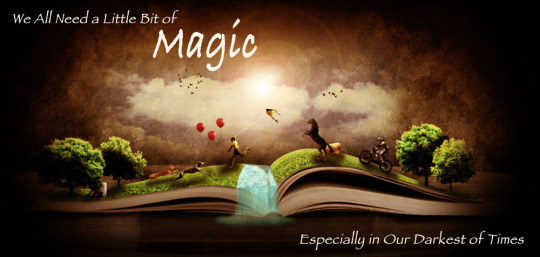



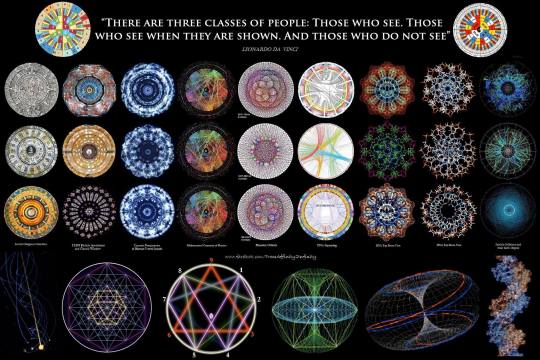
Creators of all kinds have a love / hate relationship with structure. Some equate structure with formula and reject it. Others see structure as the shortcut to success and let it overwhelm them. The truth, as with most things, is likely somewhere in between.
“Burn me with Fire. Drown Me In Rain.”


I use this basic principle to measure structure. STRUCTURE IS BIGGER THAN WE ARE. If I set out to make a car, or a cathedral, or an iPhone app, or a novel, or a movie, these things all have a structure. A structure that has been evolved over time, by creators far wiser and more skilled than I.



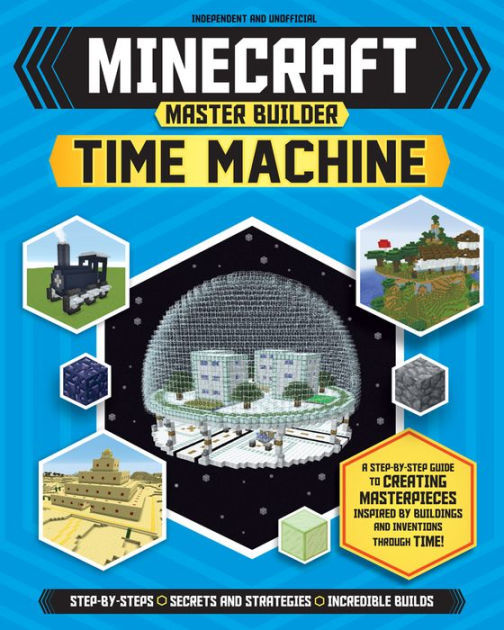
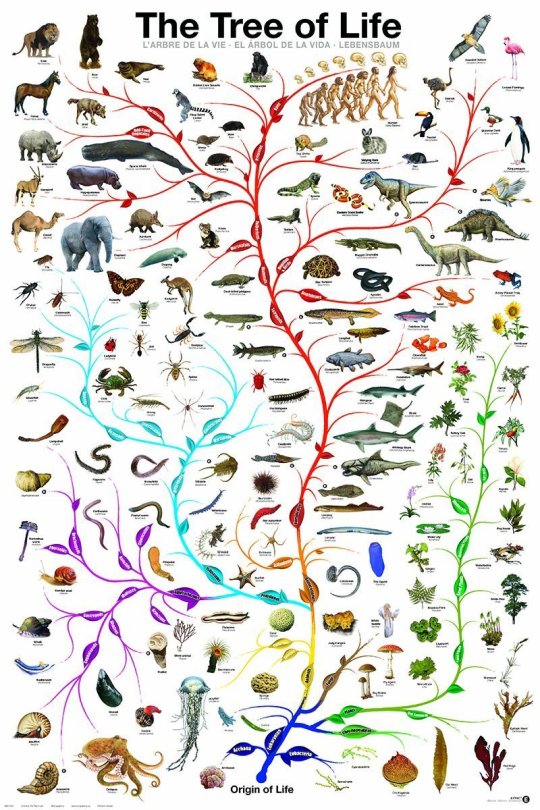


In martial arts there is a maxim: Learn the form. Master the form. Break the form. Untrained writers often rush to break the form. They see the work of a master, like Ray Bradbury perhaps, who broke the short story form in many marvelous ways, and assume the key to success is the act of breaking. But they ignore the years of hard work Bradbury first put into learning and mastering the form.

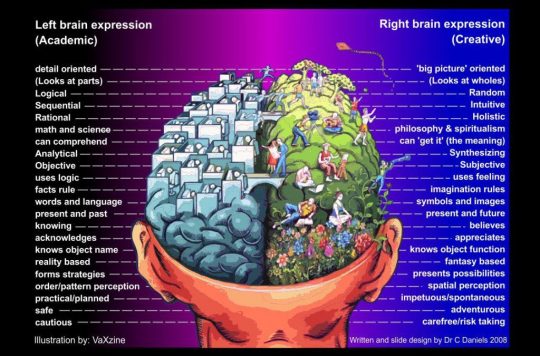

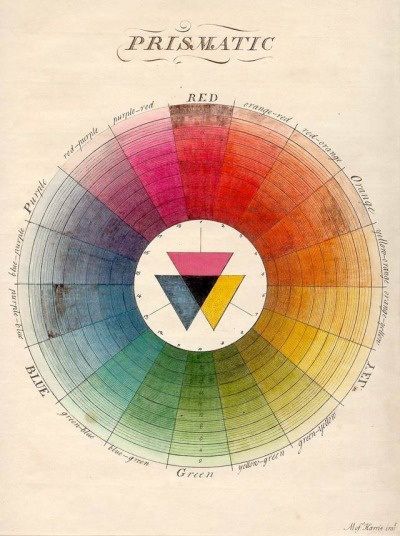
Stories seem to exist in a bewildering variety of forms. The 3 Act structure defined by Aristotle is arguably the most widely known.



Modern stageplays often adopt a 4 act structure, while Oscar winning movies like The Godfather spread over five acts. Short stories are commonly based on an Epiphany structure.
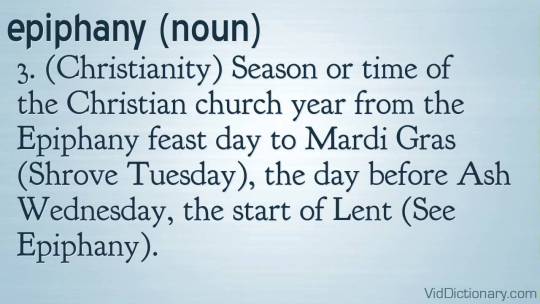
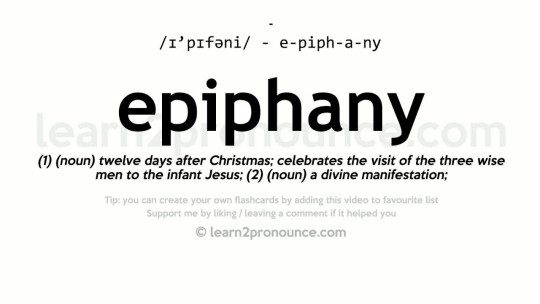


But all of these structures share that same single quality.
They are fractal.

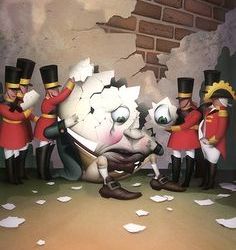
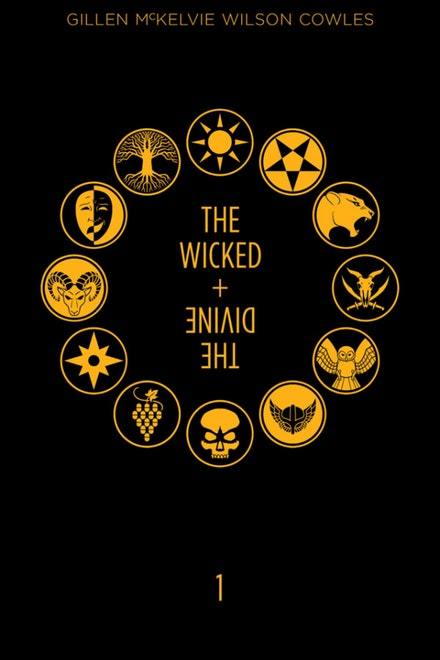
Infinite Crisis

Stories within stories.





Here’s another way into the fractal nature of story. All stories are made of stories, and are part of bigger stories. If you pick up an issue of Wonder Woman, or watch the Gal Gadot fronted movie, you’re seeing just one story within that character’s overarching story. If you watch Lawrence of Arabia, and know a little history, you realise you’re watching just one small part of the story of World War One.

(Side Note Link: The Machine At Play - Blade Runner - Sword & The Stone - Lion & The Lamb - Dare we Continue?)
History Repeating Itself


As storytellers, we make decisions about the boundaries of the story we’re going to tell. Game of Thrones is the story of one power struggle for Westeros. But it’s the beautiful weaving of the history that came before, and the smaller stories within the grand struggle, that make George R R Martin’s epic so intriguing to so many.



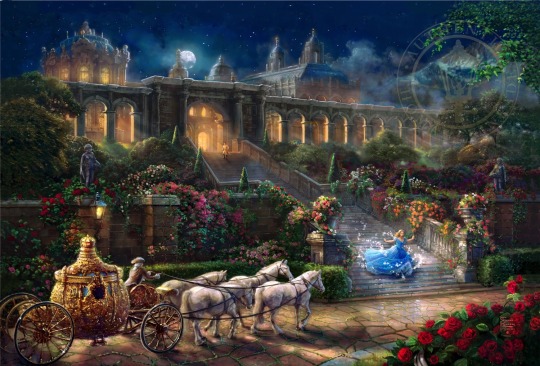

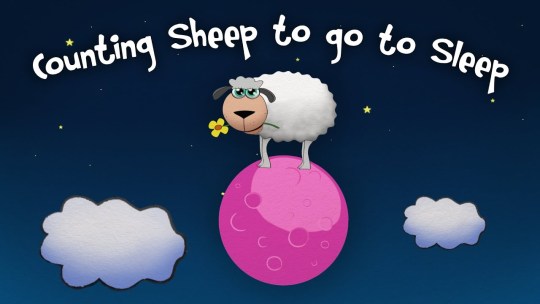
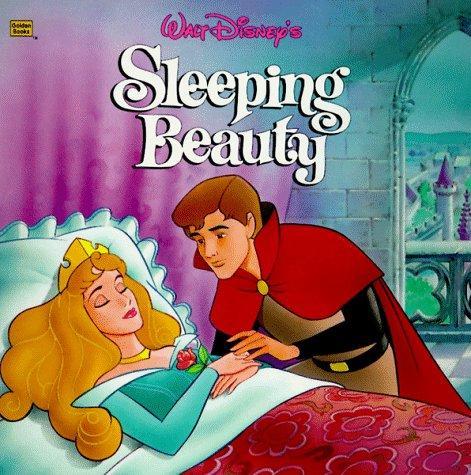

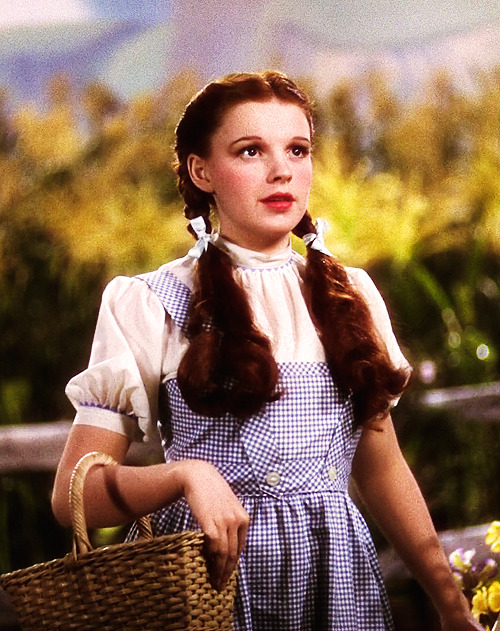

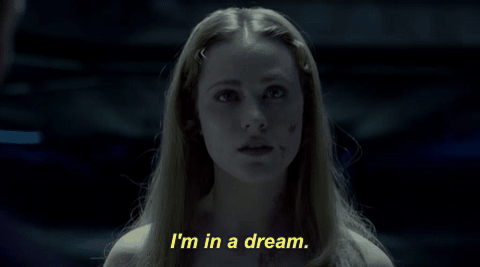
Whether you call them acts, scenes, sequences and beats…
…or parts, chapters, paragraps and sentences…
…or story arcs, issues, pages and frames…
…all stories exist are within other stories, and hold other stories within them.
“To see a world in a grain of sand. And a heaven in a wild flower. Hold infinity in the palm of your hand. And eternity in an hour.”


youtube

Can you see an epic tale in every single sentence of your story? Here is one of the single best questions you can ask to raise your storytelling to a higher level. How does this single scene, or chapter, or frame, or sentence, reflect the whole of the story? And how does this trilogy of novels, or 10 hour television series, or epic poem, relate to the smallest story it contains?
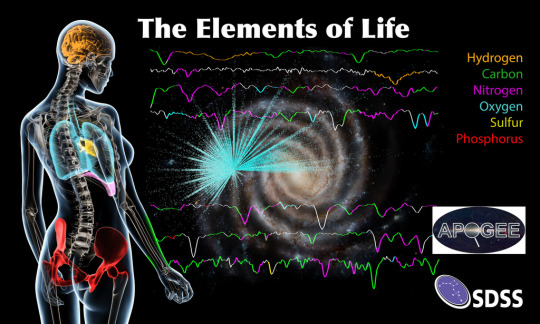


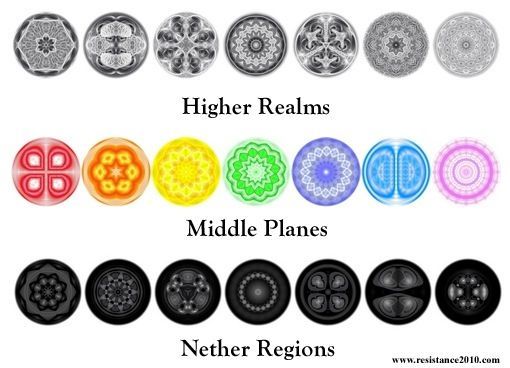


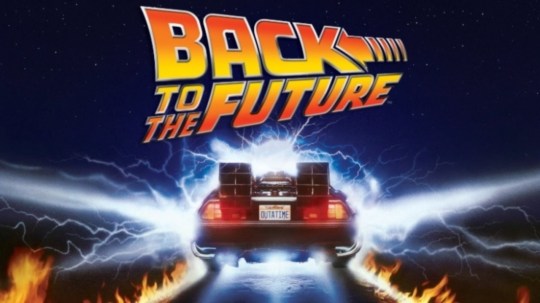
The Supercomputer That Could Map the Human Brain
Bobby Kasthuri has a problem.
In an effort to understand, on the finest level, what makes us human, he’s set out to create a complete map of the human brain : to chart where every neuron connects to every other neuron. The problem is, the brain has more connections than the Milky Way has stars. Just one millionth of the organ contains more information than all the written works in the Library of Congress. A map of the brain would represent the single largest dataset ever collected about anything in the history of the world.

Making that map seems like a task that could consume not just one lifetime , but dozens. Yet in just three years, it might just be possible.
Kasthuri, a neuroscientist at Argonne National Laboratory, is one of many scientists whose research will use a new supercomputer the lab is building, which is scheduled to be deployed by 2021. The computer, called Aurora 21 , will run one quintillion operations in parallel—a billion billion calculations—putting it on par with the processing power of the human brain. For the U.S., which has lagged behind China in an intensifying supercomputing race since 2013, this milestone—exascale computing power—is both a national status symbol and a scientific game-changer.





Agent
"one who acts,"
"effective, powerful,"
"to set in motion, drive forward; to do, perform; keep in movement"
(from PIE root *ag- "to drive, draw out or forth, move")
"deputy, representative"
"spy, secret agent"


discern
"perceive or recognize the difference or distinction between (two or more things);" "distinguish (an object) with the eyes, see distinctly, behold;" also "perceive rationally, understand;"
"to separate, set apart, divide, distribute; distinguish, perceive," from dis- "off, away"

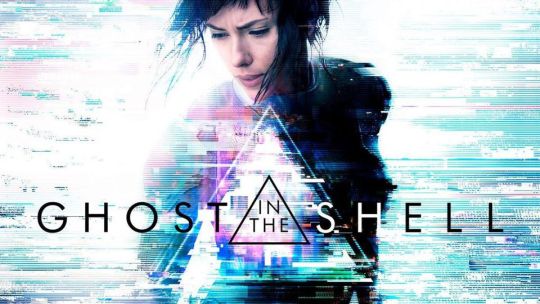
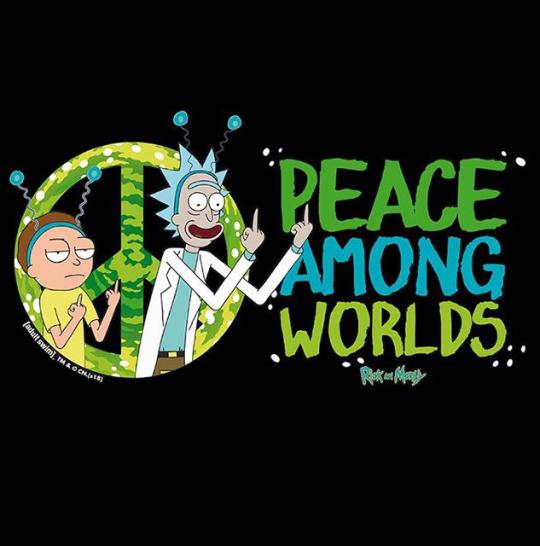
The name Aurora is a girl's name of Latin origin meaning "dawn". Aurora, the poetic name of the Roman goddess of sunrise whose tears turned into the morning dew, and of (Disney's) Sleeping Beauty, would be sure to make any little girl feel like a princess.
a natural electrical phenomenon
Plasma
"form, shape" (earlier plasm)
Greek plasma "something molded or created," hence "image, figure; counterfeit, forgery; formed style, affectation," from root *pele- (2) "flat; to spread."
"liquid part of blood"
(Click here to see the list of *pele- root forms. Much time is recommended in this open field of potential and connectivity)
Plasm
"mold or matrix, cast;" see plasma. Meaning "living matter of a cell"



Aurora has two siblings, a brother (Sol, the sun) and a sister (Luna, the moon)

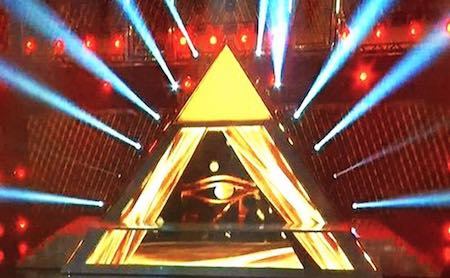
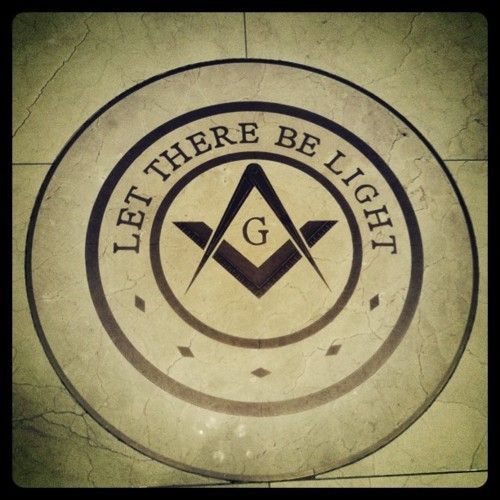








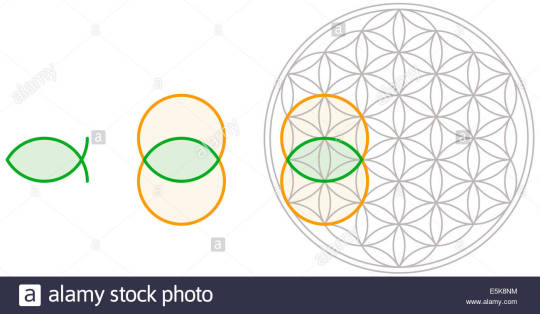





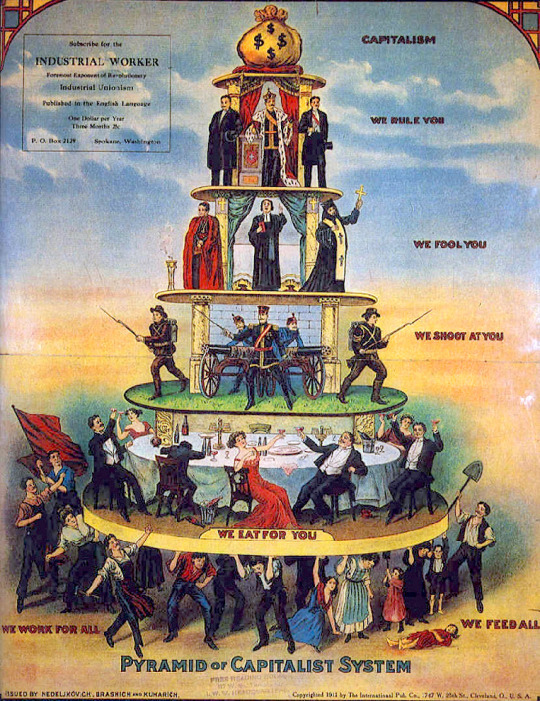


Gen(isis) Pact

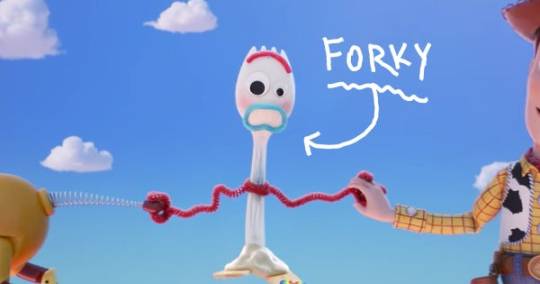

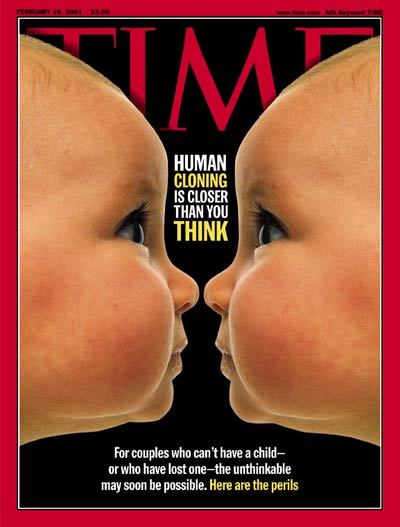
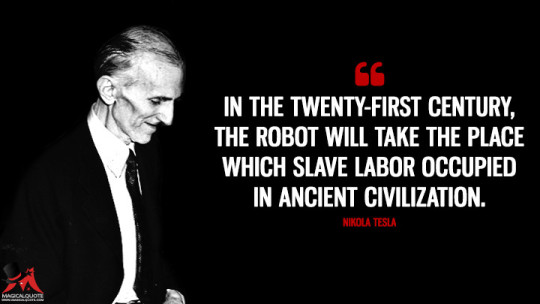
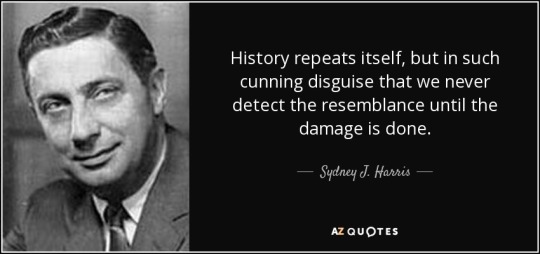


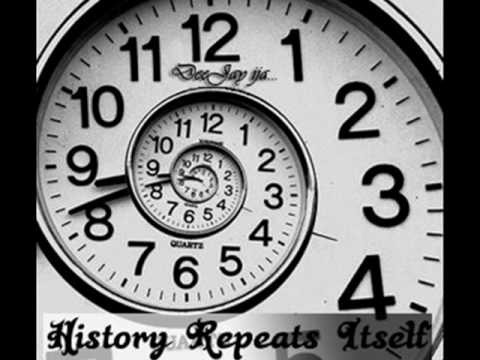


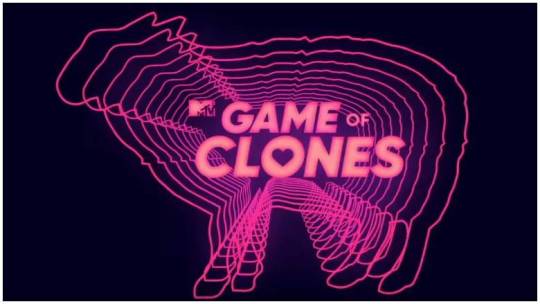
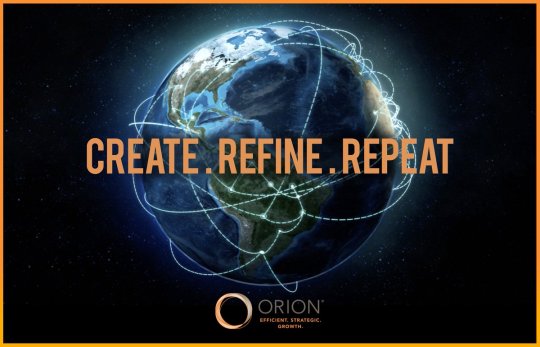

Orion & The Magi
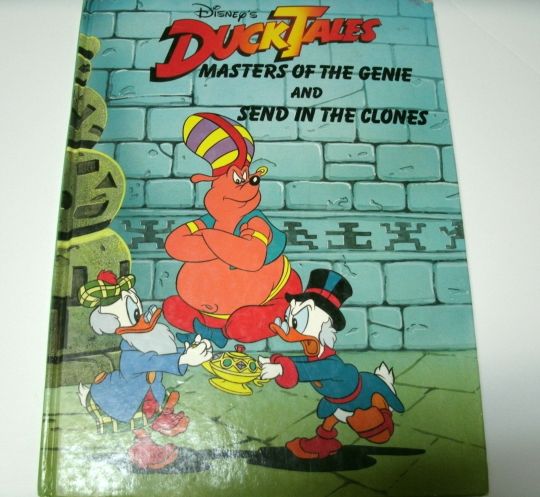



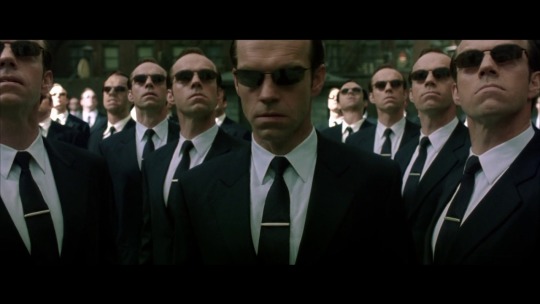
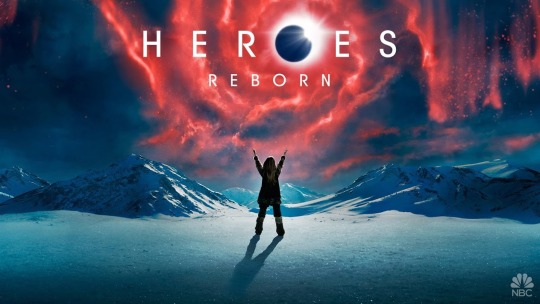



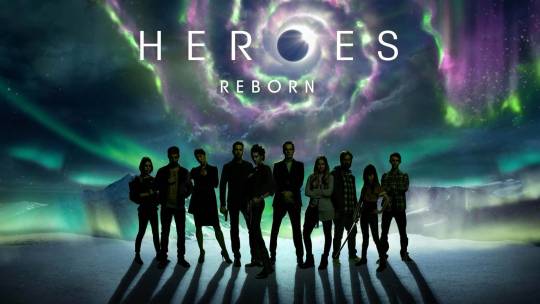

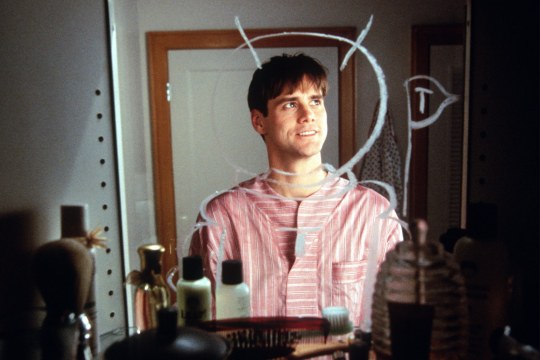

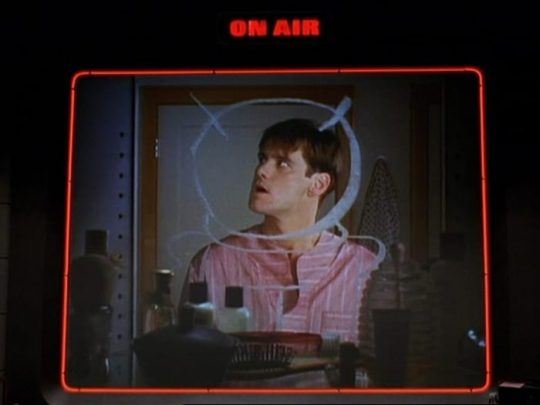
So, this is what it means to be a-live!


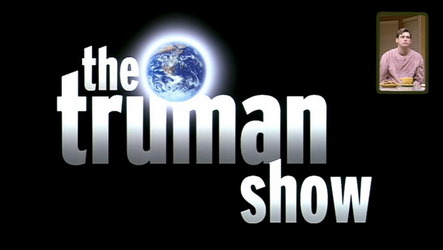
True-Man

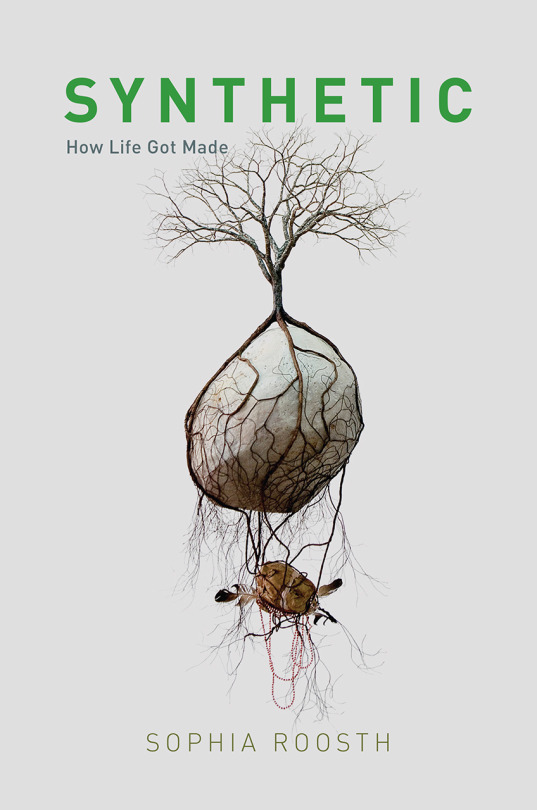
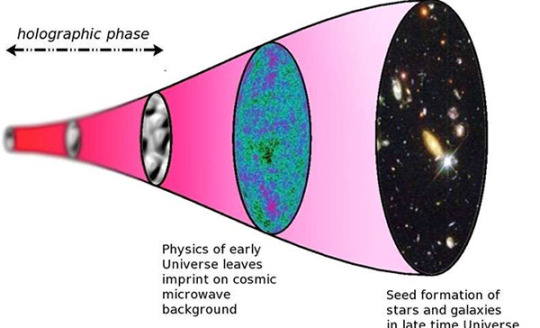



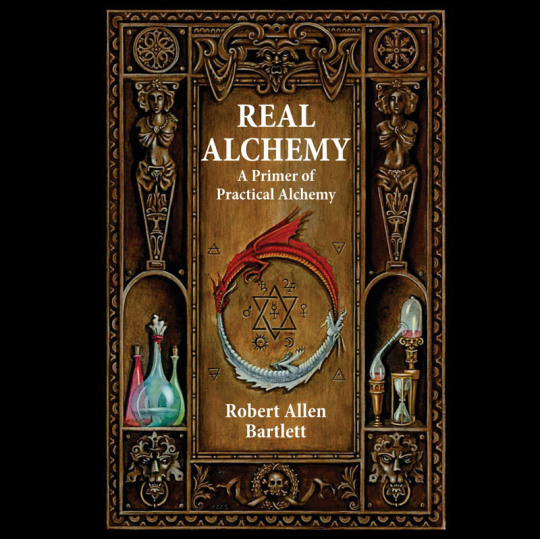
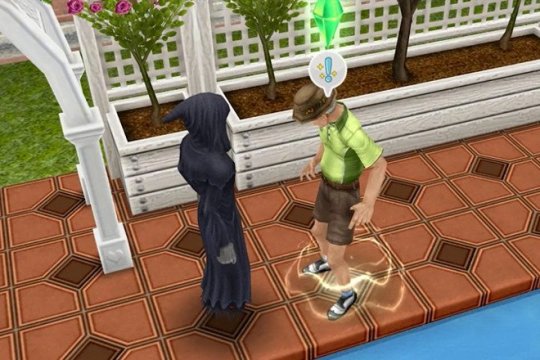
VR Minecraft is more Real than Real Life


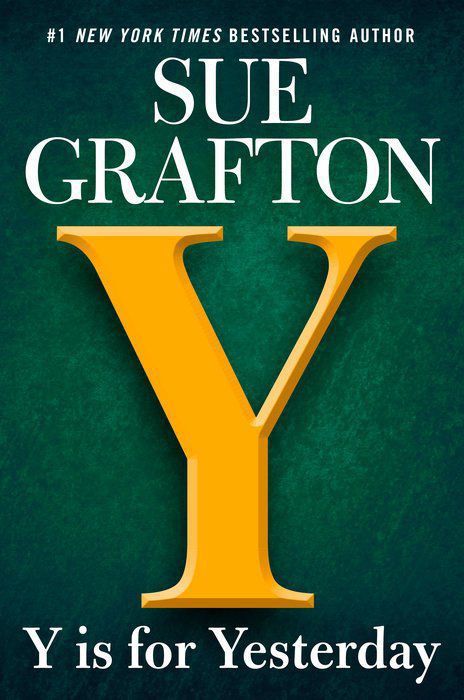

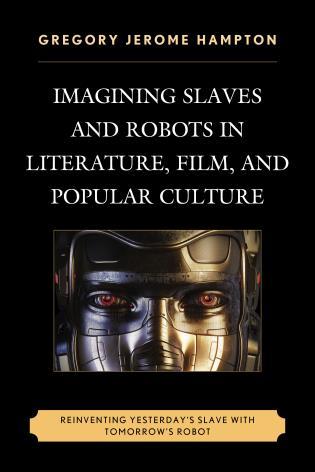


AI will be as biased as the humans that programmed it
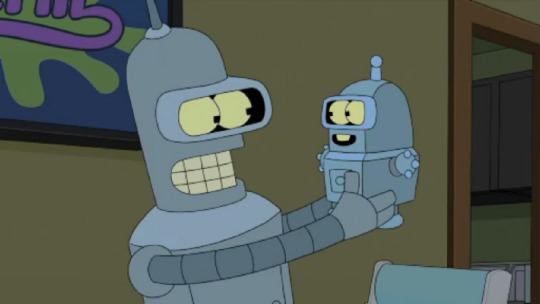


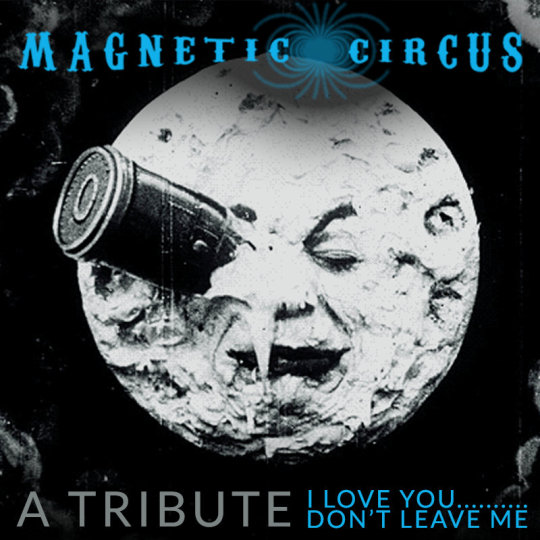



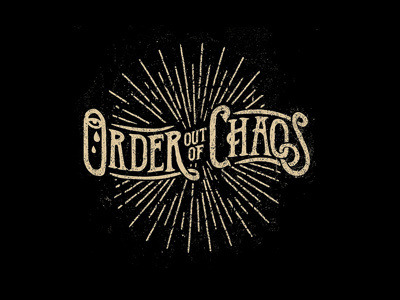
youtube
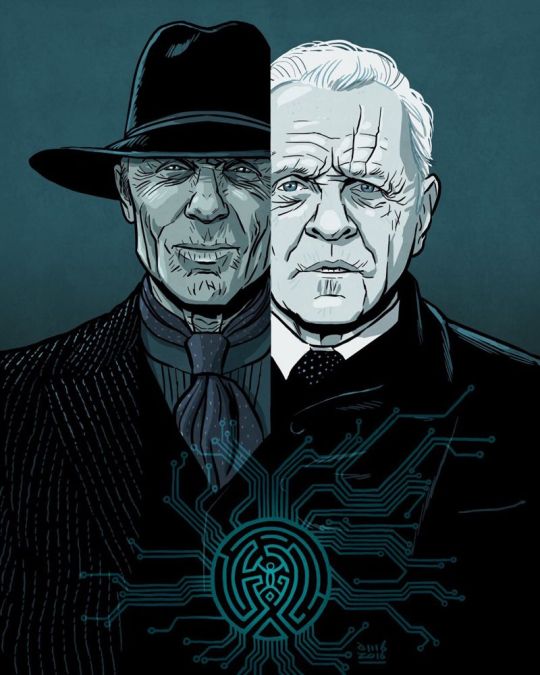


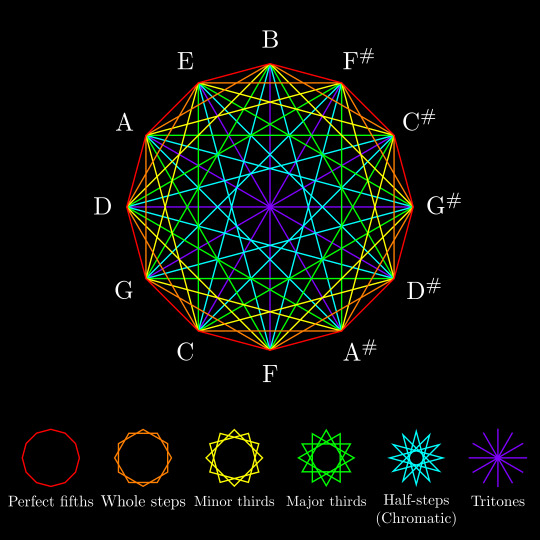

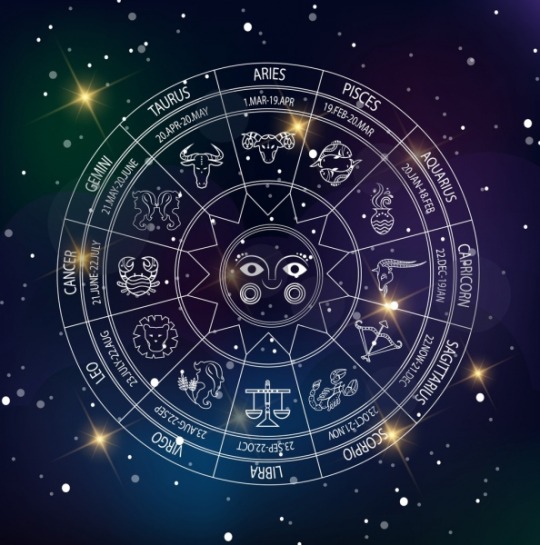
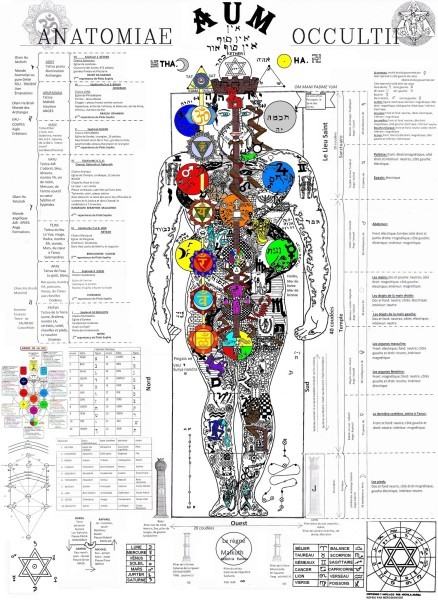

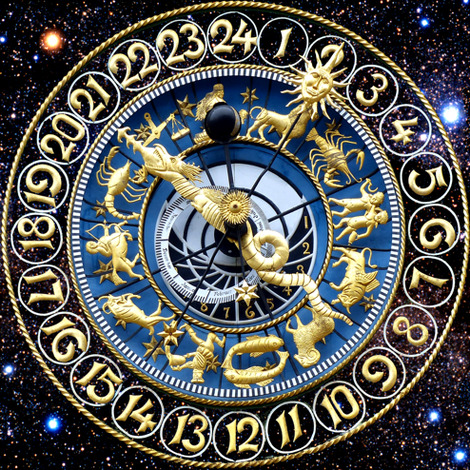
Confirmed: We Really are ‘Star Stuff’




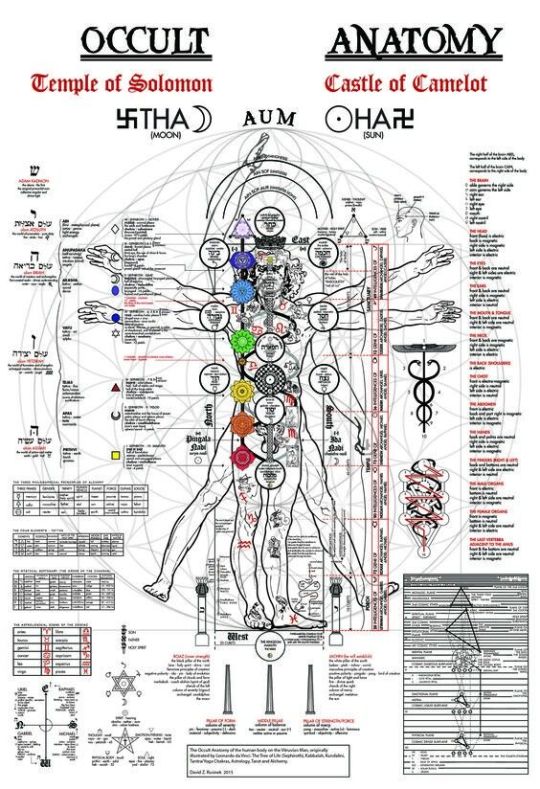
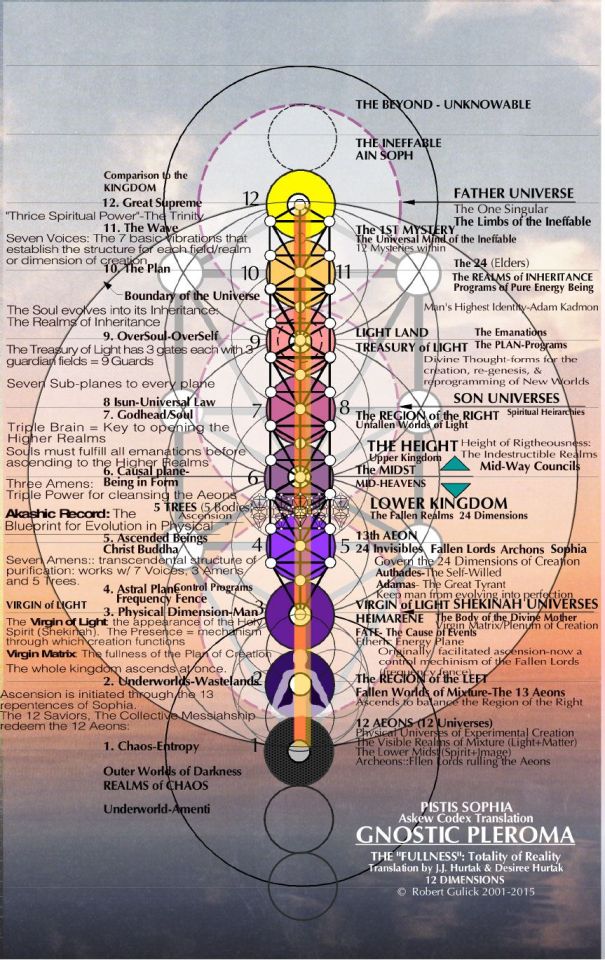

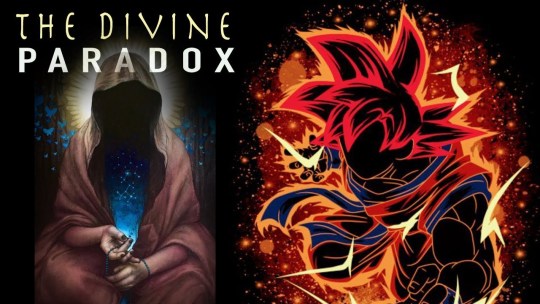
It might be that we are afraid of opening ourSelves to Our infinitely contradicting nature and essence of Infinite Chaos. Fear not, the Journey leads you Home.

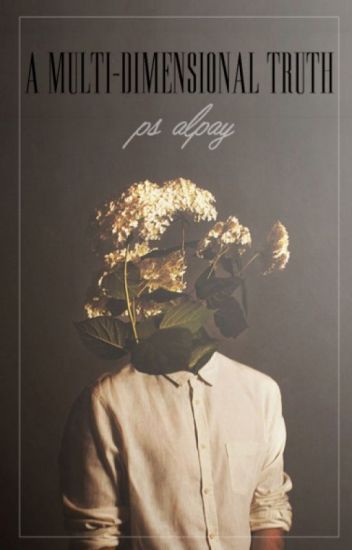


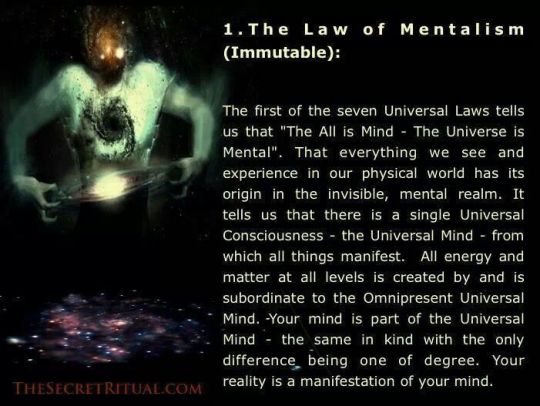
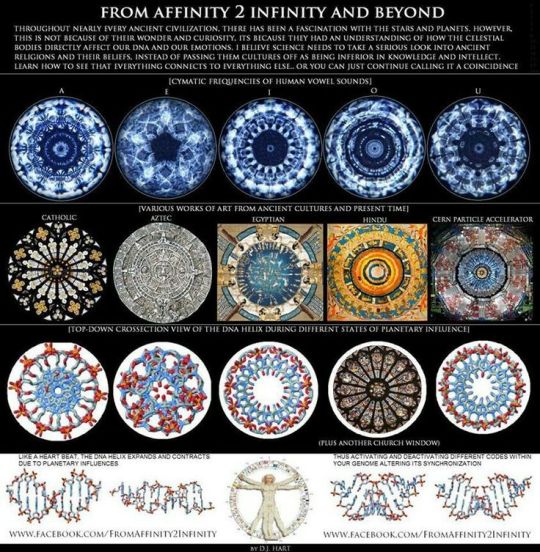

youtube
Enter The Cave
“If the doors of perception were cleansed every thing would appear to man as it is: Infinite. For man has closed himself up, till he sees all things thro' narrow chinks of his cavern.” - William Blake's poem The Marriage of Heaven and Hell:
1 note
·
View note
Text
Fic: Location, Location, Location
Title: Location, Location, Location
Rating: G
Pairing: Eventual Shotor
Characters: Shiro, Lotor, guest starring Keith, and a couple unmemorable OCs
Author’s Notes: I’m not dead! I’m just glacially slow. I’m trying to write at least a sentence every day, but that ain’t much, so I apologize. Hopefully, it’s good? Part 1 of Physician Heal Thyself and follows more or less directly after “Ready Set Bake”. Keith and Shiro are found family in this and refer to one another as brothers but are not genetically related. Keith knows he’s part Galra but has not yet met his mother, which is not really relevant to this part, but of note for later. Lotor worked in engineering research and development for Galra Inc. before he quit. He also did other things for the company and apart from the company, but that’s for later, too. I know very little about either real estate or running a business. Please excuse my ignorance and vagueness.
After the competition ended, life didn’t, so it was a couple of weeks before both Shiro and Lotor had free time to discuss their bakery project. Finally, they settled on an otherwise free Saturday and planned to meet up early and discuss looking at available properties. They had decided to establish the bakery near where Shiro was living. Lotor assured the other man that he would not mind relocating at all. In fact, he was looking forward to a fresh start, and had already found his own apartment in the area.
The night before the meetup, Shiro’s mind had been running a mile a minute, so he didn’t sleep well and was up earlier than usual. He tried to be quiet so that Keith could sleep, but it wasn’t long before the younger man came shuffling out of his room, half awake.
“Why are you up?” Keith grumbled, followed by a jaw-cracking yawn.
“Lotor and I are going to talk about locations today. You know, for the bakery? I guess I’m just...restless.”
Keith’s expression shifted by an almost unnoticeable margin, but Shiro liked to think he’d gotten pretty good at reading Keith over the years they’d known each other. Keith was excited that Shiro was finally on board with opening his own bakery, but he wasn’t too keen on Lotor. To be fair, Keith wasn’t too keen on most changes or new things.
“You have the day off from the garage, right? You could join us, if you want.”
The offer was carefully calculated to give Keith the dual opportunity of keeping an eye on the new stranger in Shiro’s life, which Shiro knew he really wanted to do, and if Shiro was lucky, to get a little more accustomed to him. If Shiro was really honest with himself, he was also a little nervous about spending an entire day alone with Lotor. They’d almost always had other people around during their interactions before.
Keith shrugged. “Okay. When’s he stopping by?”
Shiro opened his mouth to answer and then realized that while finally settling on a day, he and Lotor had forgotten to nail down a time. “Umm...”
There was a soft knock at the door that they might not have heard without the awkward pause in the conversation, and Shiro couldn’t help thinking “speak of the devil.” It really was Lotor at the door, slouching nervously on the stoop with a cardboard drink carrier holding three cups steaming in the cool morning air in one hand and a battered paper folder under the other arm.
“Am I too early? I was already up...”
“No,” Shiro assured him, inviting the other man in with a sweeping arm gesture. “We’re awake.”
“I brought hot beverages,” Lotor mumbled, though the cups were pretty obvious.
“Shiro doesn’t drink coffee,” Keith told him. “Who’s the third one for?”
“You,” Lotor offered with a small shrug, “assuming you would be awake. Otherwise, I would drink it. Caffeine is less effective a stimulant to Galra. Shiro’s is a green tea latte.”
Shiro scooped up the cup Lotor had indicated was for him. “Thanks.” He took a sip and realized that Lotor had gotten it made with coconut milk and a little honey--just how he liked it.
Keith was still looking back and forth between his own coffee and Lotor suspiciously. Shiro cut off further anticipated interrogation by explaining, “We talked about coffee preferences, or lack of them in my case, one day on the show when we were making coffee cakes. What’d you get for Keith? A triple-shot or something?” Keith already knew that Shiro had mentioned his own Galra ancestry to Lotor.
“Quadruple. They call it ‘the Defibrillator.’ It’s black, but I have some sweetener packets, if you’d like to add some.”
“No, this is fine. Thanks.” The last word was a little grudging, but Shiro appreciated the effort he knew it represented.
After a few more moments of silent sipping, Shiro gestured to the folder Lotor was still clutching tightly to his side. “Did you do some research for today?”
Lotor cleared his throat and his cheeks flushed. “Yes, I um, I’ve had a lot of time on my hands recently...” Shiro knew he’d quit his job at Galra Inc. before the competition, but he’d never thought about what the other man might be doing before the bakery project could really get moving. He didn’t seem like much of a “hobby” kind of guy, except of course for the obvious enjoyment of baking, but there was only so much of that one could do.
He pulled a city map from the folder and laid it out on the coffee table. It was peppered with small adhesive circles in different colors. In fact, most were carefully paired halves of two different colors.
“Based upon listings both online and in print, red are properties that do not currently have kitchen facilities, but could be altered to have them, green are currently fitted for some form of food industry, yellow are on the lower end of the cost scale, but not necessarily in highly trafficked areas, and blue have regular foot traffic, but are more expensive.”
“What’s purple?” Shiro asked. There were quite a few of those.
“Competition.”
“Do you know which ones are leases and which are for sale?”
Lotor dipped back into the folder. “It was getting a little cluttered, so that information is on these overlays.” He produced transparent sheets with dots in black and white. “Black is for lease and white is for sale,” he explained as he carefully placed the stark circles over their more colorful counterparts.
“Wow,” Shiro remarked, “that’s...”
“Obsessive?” Keith muttered.
“Thorough,” Shiro finished with a warning glance. “Sounds like you’ve got this pretty much covered.”
“Not entirely.” Lotor tapped the map. “When it comes to basic logistics and analysis, yes, I’m quite comfortable doing the research, but there are two things I can’t do. First, a place on paper or a screen is quite different that seeing it in person. I figure we can narrow it down some based on these factors and then go see the remaining places.”
“I agree.” Shiro nodded. “What’s the second thing?”
“The human element,” Lotor admitted with a sigh. “I very much dislike dealing with people, especially those who will inevitably be trying to sell me something. I’ve hardly looked into the associated Realtors and agents at all.”
Shiro shook his head and chuckled, and Lotor arched one brow. “Sorry. I’m not laughing at you, I promise,” Shiro hurried to reassure him. “Lucky for you, I’m more of a people person.”
Both Lotor and Keith’s eyes widened as Shiro retrieved his own folder from a desk along one wall. “I’ve been looking into ratings and reviews for different property management companies and Realtors. It shouldn’t take us long to cross reference information, and then we can make a few calls and hopefully see a few locations.”
Keith looked back and forth between the two of them. “I’m not sure the universe can handle you two working together.”
“Does that mean you don’t want to tag along?” Shiro asked playfully.
“Oh, I’m going with you,” Keith insisted.
He left briefly for a morning run while Shiro and Lotor compared notes and made some calls. Well, Shiro made a few calls. Lotor would occasionally offer a whispered question for him to relay to the person on the other end of the call, but he declined to participate otherwise.
“It’s better this way, believe me,” he declared. “My social interaction skills are limited to three things: avoiding people, which defeats the purpose entirely, saying whatever I think they want to hear, which could end badly where property is involved, and manipulating situations, which I’ve been trying very hard not to do after cutting ties with my family. Besides, I don’t have enough information on any of these places to do it effectively, yet.”
“That’s what the calls are for,” Shiro pointed out. “You ask questions to get more information.”
“I’ve been told I don’t know how to ask things politely, and I make everything sound like an interrogation.”
Shiro let it go because he really didn’t mind doing this portion of the work, and Lotor had obviously spent a great deal of time collecting and organizing other information.
By the time Keith returned from his run and took a quick shower, they had a short list of five places to visit first. One location oddly wasn’t connected to any of Shiro’s research but seemed very promising.
Several of the locations were in areas with limited parking options, so Lotor offered to drive them. Keith declined, preferring to take his own bike.
“Don’t take it personally,” Shiro told Lotor as he climbed into the passenger seat. “He doesn’t even like it when I drive. I think he likes both the combination of being in control and the open air.” Lotor just shrugged it off and headed toward downtown. He was a very cautious driver. Very.
“If you’re worried that Keith needs to follow you, he does have the address of the first place.”
“Hm?” Lotor shot him a puzzled glance. “He passed us some time ago.”
“Well, you are driving awfully slow.”
“It’s this ground traffic.” Lotor huffed. “It’s so claustrophobic, and movement options are ridiculously limited! Get me out in open space, and I assure you, things would be very different.”
“There’s nothing quite like flying in space,” Shiro readily agreed.
When they finally pulled up in front of the first place on their list, both Keith and the location’s realtor were waiting for them.
“Did you get lost?” Keith asked.
“No,” Lotor answered simply, and Shiro decided not to add any comment.
The first location had formerly been a small cafe styled like an old diner. The kitchen space would need to be totally renovated if it were to become a bakery, as it had two large grill tops, but only one small oven that had definitely seen better days. It was for rent, so any changes would have to be approved by the property owner. Shiro also couldn’t help but notice that it was midmorning on a weekend, and he’d seen hardly any foot traffic outside the large windows along the front of the building. It had looked much more appealing on paper.
The second location was equally unmemorable, though Shiro had talked Lotor into letting him drive there.
At the third location, Shiro finally got a taste of what Lotor had meant about all his questions sounding like interrogations. In this case, however, Shiro felt it was kind of justified.
It wasn’t like Shiro hadn’t expected a few of the property agencies to exaggerate or fudge a few small things. After all, this was business, and they were in it to make a profit like anyone else would be. This, however, was not just a little gilding of the lily.
It was immediately obvious that the published pictures of the storefront were not current. In the listing, there was a lovely, glass entry door. In person, there was a piece of plywood chained into the frame with a large padlock and decorated with some rather risqué graffiti. This was also the location without a pre-researched contact.
The last time Shiro had seen Lotor get angry there had been no yelling. Instead, the other man went intensely quiet, and Shiro could see that Lotor’s expression had gone completely blank.
“Tell me,” he asked in an icy tone, “don’t you think this is something that should have been mentioned in the listing?”
The property manager blinked, but her wide smile didn’t waver. “Ah, yes. This is unfortunate, but it happened only recently-”
“How recently?” Lotor interrupted. “The listing I looked at was posted only a few days ago.”
“There is an allowance included to replace the door,” the woman continued, skirting the question. “This is a great neighborhood. There’s-”
“How great a neighborhood can it be if it’s prone to property damage and vandalism?” Lotor cut into her presentation again.
“Well, just look at the other-”
“Is there something you’re not disclosing about this particular site?” He took a step forward and she took one back. “The interior description was rather vague. Should we expect it to be in
a similar state to the door? How long has this property actually been vacant? Was the information provided intentionally scant because of some kind of past incident?” Lotor was leaving very little time between questions for the woman to respond, and she was beginning to look increasingly alarmed.
“Should one of us step in?” Keith asked quietly from beside him. “She looks like she’s about ready to call the police or something.” He wasn’t wrong.
Shiro gently placed a hand on one of Lotor’s shoulders and he tensed, head whipping around to turn his piercing gaze on Shiro. His expression softened and then became quizzical.
“You think maybe you should ease up a bit? I see what you meant about coming across badly when you ask questions.”
Lotor’s eyebrows shot up and he turned back to the property manager, seeming to see for the first time how she was cowering away from him. He looked lost and a little hurt, but Shiro figured damage control took priority at the moment.
Shiro walked over to the rattled woman hands out in a placating gesture “I’m sorry about that. He’s just a bit...” he trailed off, searching for exactly the right word.
“Galra?” she suggested with a scowl.
Shiro frowned back. “I was going to go with ‘overly assertive’, actually.” He took a calming breath and made another attempt at diplomacy. “You can understand why this was an unpleasant surprise, can’t you? I’d like to think you have an explanation for all of this, and I’m willing to listen.”
This was turning into some kind of absurd property good cop, bad cop. He could see it all in his mind...
“Help me help you, ma’am,” he would say, expression concerned. “This kind of thing really upsets my business partner. I don’t know what he might do.”
“I ought to report this to the Intergalactic Business Bureau,” Lotor would mutter ominously behind him while glaring at the woman, “and I’m leaving a truly nasty review on Yowl.”
“Just tell me what we want to know. What’s really up with this place? Save yourself a lot of trouble.”
The woman’s fearful expression relaxed, and for just a moment, Shiro saw her analyzing the situation shrewdly before her expression turned neutral. “Well, I suppose that makes sense.” She must really, really want to move this property.
“I would like to apologize.” Lotor’s voice cut into their conversation at that point. It was the exact opposite of his tone from before. It was soothing and absolutely nonthreatening. “Clearly, I overreacted badly. I’m moving on from a life where corruption and deceit were commonplace. To believe I was seeing the same in the life I’m trying to start over was...deeply upsetting, but I had no right to take it out on you. If you’re still willing, I would love to see inside the building.”
If you looked up “contrition” in the dictionary, Lotor’s face could be the picture next to it. In fact, it was so perfectly sorry, Shiro’s mind instinctively distrusted the intent, but the property manager seemed to accept it.
She finally had a chance to formally introduce herself as Karen, which Shiro already knew from their brief phone conversation, and explain that she was a lawyer and didn’t usually do this kind of work, but had been managing the property for her brother, who had recently decided to sell. He and his wife had tried to start a restaurant together, but neither the business nor the marriage worked out. After it sat empty for months, they decided to sell the restaurant and split the take. Also, the door hadn’t been broken--the wife had had it made special and decided she was taking it with her.
Inside the building things were actually in pretty decent shape, though neither Shiro nor Lotor were particularly pleased with some of the decorating decisions. Those could be redone, however. There was a very nice, large oven in the kitchen they were told had been primarily used for dinner rolls and desserts. The property was also priced to move quickly. It would be more expensive than leasing initially, but both quite liked the idea of not having to answer to a landlord or property manager.
They decided to take a break for lunch after sending Karen on her way, but it was the middle of lunch rush on a Saturday, and they were having trouble finding a table anywhere.
“My apartment isn’t that far, if you’d like to grab something and eat there,” Lotor offered. Shiro and Keith both agreed, and Shiro suspected curiosity played a large factor in the decision.
The apartment really was quite close, and it was only a few minutes before they pulled into a parking lot beside a modest building. Shiro hadn’t necessarily been expecting anything extravagant, but he was fairly certain Lotor could afford an apartment a good deal larger and nicer than the small studio to which he escorted them. Lotor was clearly still in the process of unpacking, and the majority of the boxes still stacked against one wall appeared to be labelled “books.”
There was no formal dining space, so they crowded around a coffee table in the living area. Even though the seating looked comfortable, the table was low enough that it was easier to sit on the floor. For a few minutes, they were all focused on eating; wandering all over town to look at potential bakery sites was hungry work.
Eventually, Keith broke the comfortable silence by asking, “So, have you two thought of a name for the bakery, yet?”
Lotor and Shiro looked at each other. “Well, no,” Shiro admitted.
“We thought that was a step that could wait for a little while,” Lotor added.
Keith shrugged. “Okay. Just so long as it’s not some horrible pun.” He leveled a playful glare at his brother. “I don’t believe for a minute that you haven’t thought of like a dozen really awful ones.”
“I have no idea what you mean,” Shiro replied, all obviously false innocence. “I would never even think about naming a legitimate business something like ‘Bake It Or Leave It’.”
Keith groaned and rolled his eyes.
“Or ‘Flour Power’. Definitely not anything like ‘Crumb and Get It’.”
“Stop! Please!”
“Or,” Lotor interjected, face completely deadpan, “we could make it a really pretentious bakery and call it ‘The Upper Crust’.”
Both Keith and Shiro stared at him shocked silence for a few moments before Shiro burst into a fit of laughter so strong he choked on the bite of food he taken right before the unexpected joke.
Lotor’s eyes went wide and he apologized profusely. He hands fluttered between hovering uselessly in front of him and reaching toward Shiro as if to help but unsure how and back. Once he had enough air, Shiro assured him that he was fine. They locked eyes for a moment, and then both were laughing.
Keith watched them. They seemed genuinely happy, and there was warmth in their expressions. He might not be totally sold on the idea of Lotor working with Shiro yet, but there was no denying they had a connection. Suddenly, the tiny apartment seemed extra crowded.
“I don’t think I’m going to join you to look at the two places left on the list,” Keith announced. Like he had flipped some kind of switch, both of the other men’s demeanors changed from content to nervous.
“Why?” Shiro asked. “Is something wrong?”
“We’ll stop making puns,” Lotor added. “I promise.”
“I’ve just got a couple of things I need to do,” Keith hurried to explain. He had no idea why they suddenly seemed so uncomfortable with the idea of being left alone when they were getting along just fine seconds ago. He hadn’t even been meant to accompany them in the first place!
Keith was reminded of when he had applied for his current job at the garage. It hadn’t sounded like an interview would be required, so he had been a little nervous when the owner had called to arrange one. Keith didn’t hate people--well, not all of them--but he wasn’t great at interacting with strangers, and he hated small talk. He knew he came across as abrupt and unfriendly to many. Shiro had talked him down and accompanied him to the interview, waiting outside the office until he had finished, and that had only been one of many times Shiro provided unwavering support. What would it really hurt to return the favor in a small way?
Also, Keith realized, if he were to leave now, Lotor would think it was because of him. He still wasn’t anywhere near one of Keith’s favorite people, and he wasn’t sure how much they should trust him, but if nothing else, Keith was certain he intended Shiro no harm.
“It’s not urgent,” he said and watched the other two men visibly sag in relief. “I guess it can wait until after we see the other locations.”
The fourth option was also for sale fairly inexpensively and had once been a bakery, but it was a foreclosed property, and the previous owners had stripped everything they could realistically carry away and even a few that seemed decidedly unrealistic.
“Wow...” Shiro let out a low whistle as he stared at the void where a large oven had once been situated. “They must have really liked that oven.” It had to have been terribly heavy and getting it through the doorway must have been challenging to say the least.
Lotor wrinkled his nose at the state of the floor that had been underneath the former appliance. “They apparently couldn’t be bothered to clean up after themselves though, hm?”
The property might be affordable, but they would have to invest a great deal into making it workable again--maybe even more than at some of the locations they had already seen.
They never even got to see the inside of the last location on their list--it had just been leased before they got there.
Since they had eaten at Lotor’s place for lunch, Shiro invited him to eat dinner with him and Keith so they could discuss the four locations they’d seen that day. They ended up ordering pizza.
“Honestly,” Lotor admitted with a sigh, “I’m leaning toward that for sale property, as much as I’d rather not have to deal with Karen.”
“Is it the sketchy business practices or the xenophobia?” Shiro asked, only half joking.
“A little of both, really. I can’t imagine it would be terribly pleasant, and it’s at least partly my own fault.”
Shiro shrugged. “We won’t really know unless we give it a shot. We can always expand our short list and keep looking.”
“It really was a decent location,” Lotor argued. “I’m not certain how long it will remain on the market. We may only get one shot at it.”
“We don’t want to rush into a decision, though.” Karen had made it sound like the owners wanted to sell fast, but she may have been exaggerating to put them under an increased sense of pressure. Then again, they had missed out on the fifth place on that day’s list. “What do you say we sleep on it and see how we feel about it tomorrow?”
The next day, both agreed that they would make an offer on what they had started calling the “Open Door Property.” Lotor vowed to be on his best behavior, though Shiro thought he rather preferred intensely disapproving Lotor to the diplomatic but rather insincere mask he wore while “behaving.”
“You know I don’t really care if you’re perfectly polite to Karen, right?” Shiro asked. “I mean, you shouldn’t be intentionally rude or anything, but I don’t expect you to be a model citizen at all times. Just be yourself.”
Lotor arched an eyebrow but did not comment.
This time, they met Karen at her office. They had scarcely exchanged pleasantries before she informed them that she had already received an offer of the listing price.
Shiro and Lotor both knew that the property was priced on the lower end of the pricing scale for the area of town where it was located, so this was not entirely surprising. They made a higher offer and left with the uneasy knowledge that it was now a game of waiting and wills.
Unfortunately, it dragged on for several days. Every offer was countered, and the price crept upward. Eventually, they reached a point where they weren’t certain they wanted to go much higher, but the thought of losing the location after all that trouble was also unappealing.
They discussed it and settled on a maximum price they were willing to pay. It came as quite a shock when Karen called to tell them that the other interested party had just offered the exact same number.
Shiro’s shoulders slumped. This was it. They were going to have to start the process all over again. It was probably just the bitterness talking, but he thought Karen seemed pretty pleased at their disappointment, smiling from her end of the video call.
“What if,” Lotor suddenly said, startling Shiro a little, “we could match that offer but make a generous downpayment in cash?”
Karen’s eyes glittered, and Shiro was certain she wanted to ask how generous but refrained. “Could you do that?” she asked.
Shiro turned so his face was not visible and mouthed, “Could we really?”
“We could,” Lotor affirmed, cool as a cucumber. “However, that will require a trip to the bank, which cannot be done until tomorrow, and such a large withdrawal will require some paperwork. I would prefer not to go through all that trouble unless we have some assurance that this would close the deal.”
“Let me see whether the other party is willing to raise their offer, and I’ll get right back to you.” Karen’s face disappeared, and they were left to wait again.
“So, cash, huh?” On some level, Shiro had always known that Lotor was wealthy, but he hadn’t ever really made it obvious.
“In my experience, it is generally difficult to resist.” He said it so matter-of-factly that Shiro was extremely curious about those experiences, but before he had time to ask, Karen called back.
“If you can have your cash downpayment to me by five o’clock in the evening tomorrow, it’s yours,” Karen told them. She seemed somewhat skeptical that it would be possible.
“Five o’clock,” Lotor acknowledged, and Karen terminated the call.
Shiro went with Lotor to the bank the next day. “I’ve never seen a large amount of cash in person before. I’m curious.” He then added, “Besides, it feels wrong for someone to be walking around with that much money alone.”
“How would anyone know?” Lotor asked with a smile and a roll of his eyes. “I won’t be carrying it out in the open.”
“Briefcase? Duffle bag?”
Lotor laughed. “I believe you watch too many movies. It won’t be in small bills and really won’t take up that much space.” He gestured to a small, leather messenger bag he had slung over one shoulder.
“Sliding a briefcase across the table would look more impressive.”
“Do you own one? No? Well, neither do I.”
Shiro wasn’t sure why he expected the bank to be some grand, old building--probably the movies again--but he had to admit he felt more comfortable in the one they actually went to for the money. The fact that there were only three tellers meant they had to wait for a while, but there was a bowl of hard candies.
“I need to speak to Mr. Hargrave, please,” Lotor told the smiling woman behind the counter and then they went back to the candy dish.
Shiro was just explaining to Lotor how he really didn’t know whether root beer was available in barrels like the candies anymore when the door to a side office opened and a small, nervous man appeared.
“Ah, Mr. Hargrave. How are you?” Lotor greeted him politely. “I’ve come in today to-”
“Is this about the automatic transfer incident?” Hargrave interrupted, wringing his hands in front of himself. “It is, isn’t it? I know I should have contacted you immediately, but it turned out to be a false alarm, and-”
“What incident?” Lotor cut the other man off in turn.
“It was merely a computer system error. The transfer went through as expected, and the message only appeared briefly, so I had hoped you might not have noticed,” the banker confessed. “But, if that’s not why you’re here?”
“No,” Lotor told him, “but I would like to discuss this further. Perhaps in your office?”
Shiro found himself forgotten in the main lobby in the wake of this mysterious money issue. What Lotor did with his money was really none of Shiro’s business, even if he was curious. He distracted himself reading pamphlets about loans, lines of credit, and similar financial topics he discovered near the candy dish. He was in the middle of “Do You Know If You Have Saved Enough for Retirement?” when he heard the office door open again.
“I’ll arrange for your withdrawal to be transferred from the main branch,” Hargrave was saying. “I’m afraid we don’t have that amount in cash on hand today. Would you like to wait here, or have me give you a call when it arrives?”
Shiro must have looked dismayed at the idea of hanging around in the bank lobby much longer because Lotor quickly asked, “How long do you think it will take?”
“An armored transport makes the rounds from branch to branch every few hours. They should be by within the hour.”
Lotor requested to be called and they walked to a café down the street to wait.
“So,” Shiro attempted to ask casually, “is everything really okay with that transfer Hargrave was talking about?”
“Yes.” Lotor answered simply, expression revealing nothing. Oh well, it was worth a shot!
“Exactly how big a downpayment are we making?” Shiro changed the subject. “I mean, if they didn’t have it on hand, it must be a fairly large sum.”
“It’s about half of the cost of the property.”
Shiro almost spat out a mouthful of tea. “Half of the total cost?” he repeated, somewhat stunned.
“I thought that might keep dear Karen from trying to change her mind. Why? Do you think it should be more?”
At first, Shiro thought he was being sarcastic, but Lotor appeared sincere. “That should be plenty,” he finally replied. He wasn’t certain he’d ever had that much money in his own bank account all at once. “Are you sure you want to spend so much right away? I feel like I’m barely contributing.”
“You will going forward,” Lotor reassured him. “It’s an investment. I’m certain we’ll earn it back and more besides.”
A short time later, Hargrave called, and they returned to the bank. Shiro felt vaguely like he was a part of some kind of heist as he watched the banker place neatly bundled stacks of bills into Lotor’s satchel. They also both signed papers for a loan on the remaining property value.
Shiro insisted on driving on the way to Karen’s office because the money made him feel like they had a target painted on them and he wanted to get there faster than he knew Lotor would drive.
Karen’s eyes widened fractionally as she was handed the money, and Shiro was relieved that he wasn’t the only one unused to dealing with this kind of situation. There followed a great deal more paperwork, and then the key was rather anticlimactically slid across the desk to them. The deed would be sent later.
“Congratulations,” Karen told them, “it’s all yours.”
The sun had already set by the time they exited Karen’s office. They should probably just go home, but...
“Hey,” Shiro asked, nudging Lotor’s arm, “wanna go by the bakery?”
Lotor grinned. “Yes!”
They realized after they got to the building that there was currently no power. They went in anyway.
“In the dark this place is kind of...”
“Creepy?”
With only light from the streetlamps outside for illumination, the dinginess and disrepair the property had fallen into was starkly highlighted, but it was theirs now, and that counted for something.
“Well, step one down,” Shiro declared. “We have our location. You know what step two is, right?”
“Buy a new door?” Lotor asked cheekily.
Shiro snorted. “I guess that’s part of step two: get this place ready for business.”
“It’s going to be a lot of work.”
Shiro grunted in agreement. “Yeah, but that’s one of the things friends are good for.”
5 notes
·
View notes
Text
Star-Crossed
Hey there, applewood-smoked bacon jerky. Oh boy, we're getting into the really cool Pony comics now. Let's do this one first, mostly because it's so big. Last week was issue 74, and this week would logically be issue 75. Wow, can you imagine 75 whole issues? That's a milestone for sure, and the comic agrees. That's why the issue is an absolutely huge prestige format book. And being IDW's 20th anniversary, too, that makes it really a milestone to celebrate~
Here's the cover. Well, part of it:

Yeah, this is only the front cover. It's actually a wrap-around cover, with the other characters on the back cover. I chose to put only the front half for a couple reasons. One, because putting the back cover on the left while the logo is on the right just didn't look right. Two, you're still not going to see the back cover when it's on the shelf or in a collection. The front cover is the selling point, so that's what we'll look at. And it's a very nice stained-glass look. Rather than betray the story, the cover opts to just celebrate the main characters for its milestone, and that's respectable~
The comic opens with a long-ago battle with Discord. Princesses Celestia and Luna are in resplendant armour, and joined by Queen Novo of the hippogriffs, the cat queen of the Abyssinians, and even that deer king of the Everfree that I don't remember the name of. Everything's going nuts, and the wonderful combination of Andy Price's art and Discord's magic is a treat to look at. However, when confronted, Discord bleats out that "It's not me this time!", and indeed some other being appears on the horizon. Discord and the five monarchs team up and combine their magic (in a display vaguely reminiscent of the Elements of Harmony) to banish this mysterious intruder. The magic and the creature dissipate. When Celestia then demands an explanation from Discord, he puts them all to sleep, saying he can't let anyone remember what happened here. He leaves them an apology cake as well, which is nice.
Cut over to the present day, where the mane six are out at a bazaar or rummage sale of some kind. Rarity's found some sort of necklace, with a stone that not even she nor Twilight can identify. Rarity offers it to Twilight, since the purple matches with her colour scheme, and that's when things get weird. No sooner is it around Twilight's neck does a mysterious voice boom out "FIND THE REST". A voice only she can hear, no less. After a quick reconvening back at the castle, it seems only Twilight can hear the voice, no matter who wears it. Fluttershy is the voice of reason here, suggesting that maybe wearing jewelry that talks to you in a voice nopony else can hear is a bad idea. But that's when the necklace suddenly starts projecting a map. Not just any map, though: it's a star map.
The star map interacts with the Cutie Map in Twilight's castle, showing a projection of the sky and then several objects falling from said sky and impacting with the map of Equestria. There are also a bunch of space-related shout-outs in the star map, and if you recognise them all, you're a bigger nerd than I. Also, the display of the celestial objects impacting Equestria is one of those two-page spreads you have to turn on its side, which is especially difficult with the stiffer prestige-format cover. Anyway, all that aside, Twilight identifies the celestial objects not making Star Trek references as the Andalusian Constellation, a lost constellation that appeared from the sky centuries ago (gonna go out on a limb and guess probably "a thousand years ago"), and then disappeared just as quickly. The origins of both its appearance and disappearance are one of the greatest mysteries in Equestrian astronomy, so Twilight is eager to solve it.
Now, I should note that every time the necklace starts whispering to Twilight, her eyes go a bit... weird. Wobbly and bright pink. So I'm sorry to tell you that everypony's hopes that this will just be a nice, safe adventure about astronomical research are probably going to be dashed rather spectacularly. And indeed, after the rest of her friends depart to make travel plans, Twilight ends up snapping at Spike for daring too close to the necklace, unleashing one of Andy Price's legendary Scary Character Faces, a fan favourite of this blog that we haven't talked about in some time. Once Spike clears out, it is indeed revealed that something's not quite right here. Twilight is being possessed through the necklace by some sort of malevolent entity, one sharing a silhouette and name with the creature banished in the prologue...
Speaking of said prologue, we get another brief scene of probably a thousand years ago, with the same spooky silhouette rampaging. It seems that Discord could even have been in a relationship with this mysterious Cosmos, and now he's looking to break up with her the only way he can think of: by bringing it before Celestia and making it her problem. Real mature, Discord. Anyway, back in the present, the teams and travel plans have all been... planned. Since it's such a big undertaking (both the quest and the milestone comic), there's gonna be some cameo teamups. Pinkie Pie and Big Macintosh will go to Klugetown. Rainbow Dash, Rarity, and Spike are off to the Crystal Empire. Zecora and the Crusaders are headed to Griffonstone, while Fluttershy and Angel Bunny are going to scour the Everfree Forest. And finally Twilight herself will take Applejack with her to Canterlot. And when they each recover the fallen stars, bring them back to Twilight. She literally demands it.
We follow that latter team first. Twilight and Applejack ride the train to Canterlot, and Twilight begins to report that her necklace is detecting where the next nearest star fragment is. Despite AJ's concerns, Twilight leads her to the castle. Without even telling the princesses they're there, they head into a secret basement. This is apparently where Celestia stores all the dangerous things she doesn't want lying around the castle, and there's a few more cameos littered in the backgrounds here. The nature of some of this stuff starts to make Applejack even more suspicious, and when she reaches for the necklace, Cosmos drops the facade of being Twilight and attacks AJ. After a short (but really cool) fight, AJ ends up locked in a cage while Cosmos claims her prize.
Since the Everfree Forest is not too far from Fluttershy's place, she has time to stop at home and prepare there, unlike the rest of the teams. Discord's already visiting, and he tries to tempt Fluttershy off to some fantastical adventure. When she explains she's already on one, to find a fallen star, he suddenly begins to panic--especially when he finds out Twilight's already found one of the others. Rather than the Everfree, he warps the both of them to his realm. To Discord's credit, he then tells her exactly what's going on: Cosmos was a magical being like himself, but much more actively malicious. She was imprisoned in the stars, which fell to Equestria to keep them apart. He found the one in the Everfree and hid it himself, to keep it away from anyone else. Fluttershy is understanding, but reasons with him that perhaps they'd better bring the matter to Celestia.
Discord agrees, and the pair retrieve the star from the Everfree, just to further ensure it doesn't fall into the hands of some villain later on. They then warp to Canterlot--Discord's powers really cut down on travel time--where Celestia is waiting for them. Failing their spot check, Twilight grabs the star from them and tosses it to Luna. Now there's three stars, each possessing one of the princesses with a piece of Cosmos' consciousness. Yes, Twilight, Celestia, and Luna are all speaking in unison and getting flirty with Discord. Half of Cosmos being reunited has begun to bring back enough power to start warping the area around them, and Cosmos begins discussing her new takeover with Discord. Discord, however, declines, having reformed since they were last together. Cosmos is deeply displeased to hear he plans to oppose her. So, to distract him, she zaps Fluttershy with some sort of spell to give him something else to worry about, while Cosmos waits for her remaining fragments to return to her...
First of all, congratulations to My Little Pony for reaching 75 issues! It’s very rare to see a comic book reach such a high number nowadays, especially one based on a licensed property. Everyone who’s worked on this series to get it here should be very proud! I’m pretty sure I said the same sort of sentiment fir the 50th issue, and now it’s even more true~
Now then: here’s yet another villain of ages past come to wreak havoc on modern day Equestria, as they so often do. If it was anyone other than Discord, I’m not sure I’d buy the whole memory spell that he used to make them forget the incident, but Discord’s powers can suspend any disbelief. Either way, Cosmos is scary. I know Nightmare Knights just introduced Eris as another sort of “malevolent counterpart to Discord”, but Cosmos sells it way better in her flashback scenes. Additionally, when you finally get to see her in full glory at the end of the issue, she’s way scarier than a big pink anthro bird. And her being able to take over the princesses so easily is highly chilling. Of course, this is also all helped by Andy Price’s art, which continues to knock it out of the park as always~
Whatever she’s up to, we’ll just have to see if the heroes can handle it next issue. I know I’m looking forward to it, and hopefully another 75 more~
1 note
·
View note
Text
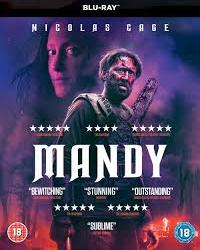




The Wrap, Part II: Return of the Curse of the Creature’s Ghost!
Film Reviews from the 51st Annual Sitges Fantasy/Horror Film Festival
by
Lucas A Cavazos
It would be of utmost denial to oneself to not take part in the occasional puff of marijuana and/or odd glass or two of red wine whilst shuffling about Sitges during this type of festival. I tell you, in this gayest of cities (and yes, I mean that in both senses of the word), nothing says loving like soaking up sun and guts while having the right side of your brain open. To quote Henry Miller…”The aim of life is to live, and to live means to be aware, joyously, drunkenly, serenely, divinely aware.”
And it is in that vein, I present to you the latest film starring Nicolas Cage, Mandy ###-1/2…Could it be that Nicolas Cage might actually have something interesting to offer now that he’s well past 50 and ready to go beyond simple nut job roles and wannabe-buff, action hits and flops? Last year, this festival premiered the currently in-run and VOD film called Mom and Dad with Selma Blair, and if that was a thing of fun and delight, which is was, this film is much more darkly mirrored and rife with psychedelic imagery, and it must be discussed. To note, it does contain ye olde, ubiquitous screaming-whilst-having-a-psychotic-fit Cage scene, doubt ye not! Set in turn of the decade 80s, Red (Cage) and Mandy (Andrea Riseborough) have removed themselves from the majority of society and live a life of slight isolation, that is until one day, Mandy is abducted by some occult-like sect with grave intentions. Linus Roach (Priest) plays Jeremiah Sands, a man who can call forth demons and demonic creatures, and when psychedelia meets rancour, flames go up and and as they do, someone in them, as well. This is where the film turns into a contemplative narrative tale on revenge and turmoil, highlighted by a tinge of hallucinogens and wasp venom, and I cannot begin to tell you how eerily creepy it is to see Linus Roach after so many years in a role like this that sends chills down your spine in ways that create sheer panic and disgust. Watching Cage take revenge is a joy and wonder, and it should be noted that the film won two of the Sitges 51st Official Selection Awards for Best Director, which went to Panos Cosmatos and Best Actress going to Andrea Riseborough, who also comes up a bit later down below. A piece of rogue psychedelic modern art on celluloid if ever there was one, tinges of Wes Craven, Heavy Metal cartoon imagery and sleep paralysis demons make this Nic Cage vehicle one of the best things he has done in simply years.
Making my way over to The Retiro in the heart of bustling Sitges to screen the noir-like film The Dark ###, I realised that I was late and upon arrival, I was quickly ushered upstairs and had to make do with a single chair propped up next to an upstairs balustrade. The Dark is an eerie piece that preys on the power of the unknown to scare the viewer into wanting to know more about its strange characters…and then the film reveals those secrets in flashback. Despite its title, there is very little in relation to darkness other than the tone of the film and its narrative of teen spirit gone horribly awry. In a former entry, I spoke of how a screened premiere entitled Zoo had encroached upon fresh zombie territory, and until recently as just over a decade ago, zombie cinema was a mostly contained affair, and reserved to a select grouping of films annually. That all changed with the mid-noughties and this latest entry into its subject matter baits us with unexplained tidbits, starting when a one Josef Hofer (Karl Markovics), described as armed and dangerous, makes his way to a rather haunting locale, where death finds him in the form of Mina, perma-resident of this cursed abode in Devil’s Den, a forestal area with a history of hauntings and Mina is that person/monster haunting those very woods. But then she discovers Alex, a blind and also-scarred teen who had been Hofer’s captive, and together the two make off for a disturbing adventure, which borders on heartfelt while also sadistic. If anything, this piece certainly toys with emotions and good cinema ought to do just that.
The Sitges Fantasy/Horror Film Fest is divided into many distinct sections, such as the main Official Selections, Noves Visions,which promotes newer filmmakers and diverse subject matter, Melies Feature and Short Film sections, Asian Focus, Animated Fare, The Orbita promoting mixed big budget and indie fare, Fanastic Discovery Features promoting obscure (and often deeper) cinema, the B and Z-grade fare of the Midnight X-Treme selections, as well as, the Critics Jury Selection. All of that to say that there is nary a specific genre within the fantasy film/horror movie genres that is NOT touched on by this film festival. Winner of the Orbita Award for Best Picture went to the US studio outfit entitled American Animals ###-1/2 and what an astounding effort it provides its audience into a peek at the rather modern mindset of the ageing millennial. Telling a 2004 real-life story by British director Bart Layton, he of the haunting 2012 film The Imposter, this 2018 effort documents how four white youths from good, hardworking families failed to fully realise a masterminded effort to steal one of, if not, the world’s most valuable book. The multi-volume Audubon Society’s Birds of America, not to mention Darwin’s first edition copy of On the Origin of Species were just two of the books to be included in a heist that Transylvania University students Spencer Reinhard and Warren Lipka (played to perfection by Barry Keoghan and Evan Peters) foolishly decided to rob from the special collections library department. To say that the subject matter is mid-level at best might be a tad harsh but only just so; that said, the way Layton maps out the mental state of these middle-to-upper middle class boys should give all of us a hint as to where these boys, and millions like them, are coming from. The plan of a heist is bred with the idea that their spoiled lives have hindered their true creative identities, and so to tell the story, the director secured interviews with the actual perpetrators and spliced that with top grade talent re-enacting the actual events. The film cannot be heralded as a thing of wonder, as it truly details the dumbest snafu of a heist ever on American soil. But what it succeeds in showing is that insecurity, lack of identity, and seeds of doubt are rife amongst today’s young adults, and if we are not fomenting stronger individuals as siblings, educators, parents, et al…we will continue to create these spoiled races of highly non-autonomous individuals. Give them some tough love, for goodness sake. Worthy of a view for any parent or educator.
AND NOW FOR SOMETHING COMPLETELY DIFFERENT…Lars Von Trier, he of the Dogme 95 cinema movement and so many odd, jarring and sometimes good celluloid pieces…see Celebration and this film as examples please…he of the “understanding Hitler, I’m a Nazi” joke he pulled a few years back at Cannes, which then had him banned for half a decade, premiered his latest work last week at Sitges. It a doozy of a film that garnered some decent attention and a European and Spanish distributor, for sure. It’s been a hot minute since we’ve seen Matt Dillon on the big screen, and the brief time with Uma Thurman at the film’s beginning is a dark scene of beauty…and then not. Here’s the thing, as always we are dealing with the tortured mindset of a Scandinavian director who seethes out his demons onto celluloid, but that alone does not make it exceptional art, although I truly believe he thinks it is. In turn, I truly believe that von Trier is quite likely a mitigated sociopath. That said, while there is a bit of reverential awe to his masterful ways of movie manipulation, it is his use of dark comedy that sets this film apart from other recent fare he has brought us. Matt Dillon plays the titular character and while amusing at first, he soon grows languidly repetitive and chauvinistic, and while there are scenes of comedic brilliance, such as an OCD-related clean up job that leads to an incident with a policeman or the bang-down job he does trying to dispose of bodies in a freezer, it is impossible for this student and teacher of history to not associate the fact that we are watching a man, a DANISH man no less (do your research as to why I emphasise that, chirren) play out his darker inner recesses for our viewing interest, but it surely makes me aware that we are also likely dealing with his pathos. That’s what really makes The House That Jack Built ###-1/2 really scary.
Lastly this entry, Nancy ###-1/2 brings up the actress Andrea Riseborough again, and I would like to note that often at awards season and ceremonies, actors get rewarded for an individual work, which often plays testament to all the other work they’ve done in their field that year. As Riseborough won Best Actress at this year’s Sitges Fantasy/Horror Film Fest, I believe this piece was much more deserved than the aforementioned Mandy for that award. I also find it compelling that she as an actress chose to make two, back-to-back films about tortured women with their names as the movie titles. Nancy is a quasi-failed career woman tending to her mum who suffers from some neural disorder and who is unintentionally suffocating her daughter with complaints and stress…but when mum dies suddenly, what is Nancy to do but discover that she was likely abducted years earlier and soon begins to associate herself with a long lost child case never resolved that might fit her theory about herself, however strained it is. What ensues is a emotional tour de force involving the parents of the long missing child, played to award-level precision by J. Cameron Smith as Ellen and Steve Buscemi as her hubby Leo. When Nancy sets up an appointment to meet with them, they take a shining to her at once and while awaiting DNA results, take her in to stay with them, including with her cat to which Leo is allergic. As scenes go by, even though this might be more in order in an indie film fest rather than here at Sitges, you also understand that the fantastical elements lie in the mind of the titular woman, as well as, in director Christina Chloe’s softly brutal touch. A film meant for those who understand healing and suspension of (dis)belief, Nancy gives Andrea Riseborough a chance at becoming a celebrated actress to emulate.
#abitterlifethroughcinema#sitges film festival#mandymovie#TheDarkFilm#americananimals#the house that jack built#NancyFilm#matt dillon#steve buscemi#nicolas cage
1 note
·
View note
Photo









Marcus Vergette
This is my adored godfather, Marcus. He is an American sculptor based Devon, who sculpts bells, plays double bass player and is a composer (album https://open.spotify.com/album/73l22R1IAVr6m329QeVZaj?si=N8_HfgHqQWOraTOmh7UQbQ ). He was born in Carbondale, Illinois, from where he tells me crazy, wild adventure stories, and terrible tales of the racial injustice he witnessed; I watched Three Billboards Outside Ebbing Missouri with him at the cinema when it came out (he was filled with childlike excitement about the big screen, having lived in rural Devon for decades) and he was flooded with tears by those memories of where he’s from. He studied at Portsmouth School of Art, Southern Illinois University and Central School of Art, London before embarking upon his mad and beautiful projects in Devon.
Much of my childhood was filled with standing, covered in mud, looking up in awe at giant sculptures suspended in his barn. The Time and Tide Bells project comprises bells on the UK coast and rung by the action of the sea at high tide. The bells make a comment on sea level rise that is allusive and metaphorical, for as the years and decades pass, rising sea level is going to have a dramatic impact on our coast, and the people who live there. He maps biodiversity loss around him https://www.youtube.com/watch?v=jrkOuZQuQ5U - and believes the bells provide an ideal way of bringing outdoor learning to numerous strands and stages of education, and the programme actively provides teachers and parents with schemes of work and suggested practical activities to bring his perspective on outdoor, environmentally oriented education, to as wide an audience as possible.
The first was installed at Appledore, Devon in 2009, and there are others in Lancashire with further installations being planned now. His first bell was created as a community project in his local village of Highampton, to mark and commemorate the ending of the Foot and Mouth Disease epidemic of 2001. His ideas for bell sculptures began when he heard his neighbour ring the church bells all day after the movement restrictions were lifted on my parish at the end of the Foot and Mouth outbreak. This was the first time they had rung in six months. This series of sculptures began with making a bell that could be rung by anyone - the only public access bell in the UK.
French historian Alain Corbain suggests that bells can be considered the mouthpiece of a culture. All cultures make different types of bells, and have used bells to express and symbolise themselves. There is something universal, profound, and spiritual we recognise in a bell with resonance symbolically as well as acoustically. Marcus thinks of these bell sculptures not only as a mouthpieces but also as earpieces, reflecting his social conscience intertwined with his love for music.
‘What they are is a gift to the host community, and owned, in every sense, by them. A gift both literal and metaphorical; to date the funding structure has covered the cost of their casting ‘centrally’; and completely free rein has been given to communities in the form of their mounting, their naming, and the inscriptions they bear. All installations have come about because by one means or another – often by visiting an existing bell – potential hosts have embarked on the very substantial labour of getting a bell installed’.
‘Listening Bell’ (2006) is on the campus of the University of Leicester, and his Harmonic Cannon (2017) stands in the courtyard of Trinity Laban in Greenwich. Many of the bell sculptures have engaged with their environment by physically responding to it; either by being slowly eroded by a stream, sounding on the high tide, or marking the Polar Star. He uses the latest computer developments in Finite Element Analysis ( which can determine the vibrations within a material) to design new bell forms with specific harmonic relationships.
Vergette statement about climate related work
One of the many dimensions of the project is concern about climate change. And since it involves the creation of energy-intensive large bronze castings it is entirely appropriate to think about how to mitigate the impact of that process. The principle of carbon offsetting is that of investing in a project that will, by one means or another, reduce the amount of CO2 in the atmosphere, to offset emissions linked to whatever one is doing. In recent years forestry has become the most popular, with (in 2018) twice the volume of emissions saved than the second most popular, renewable energy, and over four times the financial investment globally. This trend is continuing. For a variety of reasons, not least its common-sense appeal, it also seems the best fit to the Time and Tide Bells. And although tree-planting in the tropics can offer significantly greater carbon sequestration rates than in the UK, there is common-sense appeal of something reasonably close at hand, a location that could even be visited. It is worth bearing in mind the fundamental point about tree-based carbon offsets: they are all about changing land use into permanent woodland. Since the practicalities of offsetting are opaque – the project may be geographically remote, and its claimed benefits in CO2 capture terms unclear at first or even second glance – a significant industry has grown up around certification and standards. It is apocryphal, ever since George Monbiot memorably likened offsetting to the purchases of Medieval indulgences, that there is a great deal of misinformation and indeed dishonesty in this world.
The challenges to legitimate offsetting are these:
1. Permanence: trees must live long enough to deliver the promised carbon capture.
2. Additionality: the trees were not going to be planted anyway for some other reason.
3. Leakage: they are not permitting other emissions somewhere else.
Several international bodies exist claiming to vet projects in accordance with them. For tree planting in the UK there is just one, the Woodland Carbon Code, developed by the Forestry Commission. A number of practical schemes operate under this umbrella – i.e. are Woodland Carbon Code accredited. We have selected the Carbon Club scheme, administered by Forest Carbon, a Durham-based business itself involved in the development of the code. Forest Carbon is linked to the United Bank of Carbon, a non-profit partnership between environmental scientists and businesses, linked to Leeds University’s Priestley Centre. We are paying the Carbon Club £17 per month, aiming to mitigate 20 tonnes of emissions per annum – roughly equivalent to the installation of two bells. See our calculation on the emissions linked to a bell for an analysis of this. We also recognise that this approach won’t satisfy all, due to residual concerns about the whole business of offsetting, and the opacity of the calculations involved. We are therefore keeping it under review. Two projects that have interesting links to our coastal orientation are research into and action on the restoration of Seagrass, and also into Kelp. These are exciting in many ways, though not yet at a stage where they can act as any sort of equivalent to woodland planting.
Short doc about the project: https://www.youtube.com/watch?v=ZxpYQ3UfD7o
1 note
·
View note
Text
Wednesday 23rd December 2020
Our Garden etc. Birds. Part 2 The Comings and Goings
♦ bold type indicates a link to an outside site not affiliated to this blog
Let’s start with our traditional ‘Christmas’ bird. The Robin is a member of the Thrush family and is related to both Blackbird and Nightingale who are all also well known for their singing.

Most Robins live a sedentary lifestyle, staunchly defending their own patch of territory from rivals. In fact, they have apparently been known to fight their own reflection or spar with an adversary to the death.
Many Robins won’t move more than 5km (3.11m) whatever the season. Some leave the UK for warmer climates before Winter arrives. Most of these birds are female, crossing the Channel to as far away as Spain or Portugal. They return to the UK with the warmer weather. No passports or Visas required for their wings - bit of a topical joke there: wildlife only obeys borders when it wants to.
We have numerous resident Robins here because we have such a large extent of suitable habitat surrounding the house and they know a good source of food and water for certain. It’s all very harmonic at the moment, but of course that’s subject to change when there’s more at stake.
Robin Facts:
Only for a short period in late summer while they are moulting and inconspicuous do robins stop singing. Both sexes sing.
As with the Nightingale, the song is usually delivered from a concealed perch within a bush or a tree, exposed perches are infrequent. Autumn and Spring songs are distinctly different. The Autumn song starts after the moult, from late Summer onwards. It is more subdued and melancholy in its tone, while the spring song is powerful, confident and upbeat.
The Spring song can start as early as mid-December, reaching full force in Spring. Its purpose is two-fold: to defend a territory and to attract a mate. Therefore, Spring song is far more powerful in males.
Robins are adapted to life in poor light and are often active in half-light when few other birds are about. They tend to be among the earliest birds to start the dawn chorus and one of the last to stop in the evening.
Street lights and floodlights can trigger singing in the middle of the night, and if roosting Robins are disturbed, they can burst into song even in complete darkness.
RSPB
In mild winters robins can start breeding as early as January although their usual breeding season starts in March.
Every continent has its own species of robins, but only the Japanese and Ryukyu Robins are closely related to the European Robin.
Birdspot

Remember last week’s controversy about the colour of their eggs? If you missed it, THIS is the Blog entry you want. Don’t let the headline title put you off, it’s all in there, scroll down.
One of the most interesting facts about migrating Robins is how faithful they are to their territories. Many maintain both their summer and winter patches despite them being hundreds of kilometres apart.
Of course the same is true in reverse. Resident birds are often joined by migrants from Scandinavia, Europe and Russia who avoid the most severe weather in their own countries. Along with other members of the Thrush family like Redwings, Fieldfares and Blackbirds, they arrive on British shores - usually along the East coast - once their own food supply has been covered by snow and ice.
When other garden birds migrate and return
At least 4,000 species of bird are regular migrants. That's about 40 per cent of the world's total. But some parts of the world have a higher proportion of migrants than others.
RSPB
Between September and March, 10-20 million Chaffinches fly here from Scandinavia and Western Europe. They can be differentiated from our resident Chaffinches by their foraging behaviour: searching for food in large flocks on open farmland. UK Chaffinches favour gardens, woodlands and hedgerows.
The UK also sees an influx of Starlings during Winter. Fleeing the severe cold in Eastern Europe, they seek solace in our abundant food sources and comparatively balmy temperatures. Numbers will trickle in throughout September, but the influx really kicks off during October. According to experts, one UK Starling roost numbered close to one million over-wintering birds!
In our own garden the most unusual bird we’ve seen visiting is a Turtle Dove, just the one and only on two occasions in subsequent years. Red listed as endangered and even on the verge of extinction it was a real thrill to see it and report the sighting to Operation Turtle Dove.
Turtle Doves have very distinctive plumage and beautiful voice quite different from other Pigeons.
The 12 Days of Christmas is a song that promises a great deal, but there’s a line that carollers may have to omit in future. Before a whole house of leaping lords and dancing ladies, the second day is supposed to bring two turtle doves. But dramatic declines in populations across Europe may mean that day two disappoints true loves in Christmases to come.
Only slightly larger than a blackbird, the European turtle dove is the UK’s smallest species of pigeon, as well as its only migrant species. You would be hard pushed to find turtle doves in the UK during December, as they spend the winter in sub-Saharan Africa, returning to Europe to breed in late April. With their return comes their gentle purring song, a long-standing sign of spring.
The Conversation

Turtle Dove in our East Sussex garden - yes they are a real thing (for now)
Formerly a widespread breeding species in Britain, the Turtle Dove population in Britain has declined by over 90% since 1994.* The declines are likely linked to changes in agriculture on their breeding grounds in Europe, as well as hunting pressure in the Mediterranean region and possibly environmental changes in their wintering grounds.
BTO
UK decline 94% since 1995 - source Operation Turtle Dove.
Dangers include the fact that it likes to mainly feed from the seeds of weeds and the tidier our land becomes, the more their diet reduces...no one can say that we don’t do our bit Chez Nature Watch! and very sadly, recreational hunting in some parts of Continental Europe.
European Turtle Dove will no longer legally be killed in France this autumn, after the Conseil d'Etat banned hunting of the Vulnerable-listed species. On Friday [11 September 2020], the highest administrative court in France outlawed the practice for the 2020-21 season.14 Sept 2020 Birdguides.com
I really hope the ban continues and spreads far and wide.
You can read more about bird migration here from the RSPB. It offers loads of information and right at the bottom of that page you can also read more about Turtle Doves.
Of course, nothing for me tops the year we had Swallows take over the open fronted nest box in our porch. Getting photos was tricky as we didn’t want to disturb them - to the extent of taking a circular route to go up and down stairs and using our back door when we could.
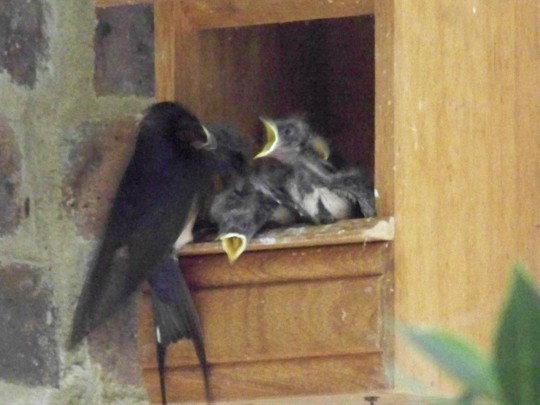
I often wonder what happened to our brood. Just look at the BTO Migration Map. It’s an incredibly long and arduous journey, fraught with dangers. Apparently this year numbers here were down due to catastrophic storms off Greece in April or May. There did seem to be a healthy population in our neck of the woods though and I always look forward to seeing the migrants back again.
There was an interesting blog about this Summer’s situation Here from a bird food supplier in Hampshire.

Picture credit the BTO as above link
There were actually five in our brood and they all fledged successfully. The photos are fuzzy but given the low light, stealth and using only a little camera, at least I got a record of their Summer with us. I’ve always been so disappointed they didn’t return.
Most songbirds use a nest for just a single clutch or season, then build a new one – if they survive to breed again. But one study showed that most swallows returned to the same colony, with 44 per cent of pairs reoccupying the same nest. ... A good nest may be reused for 10–15 years by a series of different pairs.
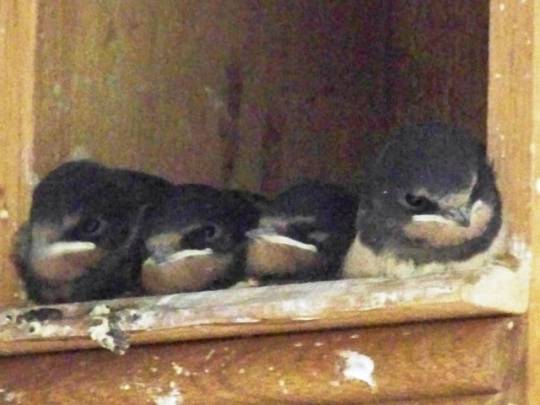
Finally today I can’t finish without a big shout out for the BTO Cuckoo Tracking Project where you can get lots of information and also follow the whereabouts and progress of Cuckoos making their journeys backwards and forwards. Currently there’s information on Carlton II, PJ and Valentine.
Cuckoo Article from Countryfile. It’s brilliant.
I hope the last couple of Blogs have been informative as well as interesting. There’s certainly enough reading material to cover quiet moments over the Christmas break if you want something entirely different. I never pretend to be an expert in anything but do go to reputable sources for the links and enjoy increasing my knowledge as I research what to include.
Notes from the Kitchen:
Last night we had a really delicious fish pie. We used Haddock and Salmon, leeks, peas and carrots, parsley and a savoury white sauce. I had thought about grating cheese on top of the potato and adding some thin slices of tomato, but didn’t get around to it...lazy!
Decoration from the Standen Courtyard Christmas Trees
A Pointsettia flower.
Personal details removed from label, the lady who crafted this is hoping to become a volunteer at the property in the New Year.

December 23rd Advent Door. Not expensive, just Little Deer

The Nature Watch Nativity
MANY CHRISTMAS CAROLS make mention of the three kings, who follow a star and come to pay homage to the baby Jesus in Bethlehem. In the Bible, they are not called kings, and their number is not specified—instead they are “wise men from the East.” At many courts in the east, including ancient Babylon and Persia, learned astrologers often served as priestly advisers, practiced in the art of magic. In the centuries since, the three magi have been interpreted as kings.
Taken from This Page where you can see an absolutely incredibly beautiful and ancient mosaic.

Carol of Choice from King’s College Choir, Cambridge
‘We Three Kings’
youtube
0 notes
Text
Post 3 - Multicultural America
1.What is the subject of your film, program, or internet/social media selection? Provide a brief summary, describing your selection and how it relates to our course topics, readings, and screenings.
For the site I picked, I used the root dot com because I wanted to find a way to discuss white-passing and also how it’s changing. Initially, I was going to do that by introducing the 1950s movie, Imitation of Life, for my post about films. Both the remake and original, though, give off a white person’s narration of what it’s like to be a white-passing individual, similar to how Gone with the wind is a white supremacist view of how slavery in the south was like.
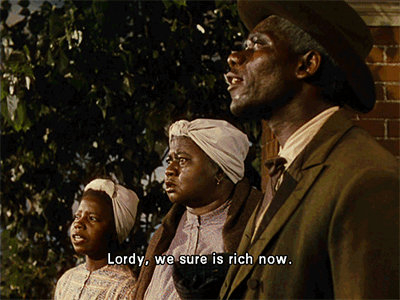
(The way the slaves were depicted is far from reality, making it uncomfortable to watch at times when they portray the mammy character.)
In short, it sugar-coats the trauma, glossing over the true pains that black people faced when navigating their world—and for that reason, I avoided it.
Before I dive into the article about white passing, let us review what “passing” is first. Passing can be used in more ways than just race. For someone to pass, it means to be perceived as something they aren’t. When it comes to the topic of race, white passing is when someone passes as white, but in actuality have a mixed-race background. Throughout US history, African Americans have passed as white as a means of survival, understanding that there life would be at risk if the truth was told about their parent’s racial background. Society was closed off for non-whites; the best schools, best towns, best jobs were in the segregated white side of town.

For someone of mixed-race heritage to venture into those areas safely, they would have to embrace only one side and play into the image of what they wanted others to see when they looked at them. Because, at the end of the day, the system of how race operates is based on perception.
Still, to this day, people have to put up an inaccurate front, maybe even lie about their real name, to secure a job. Race-based implicate bias in workplaces has led to research being brought to the public’s attention due to how serious the issue has gotten throughout the years.
Looking at a study conducted by Princeton professors, Paul von Zielbauer, of New York Times, discusses how race plays a big factor—despite having problems with law enforcement. White men with a criminal conviction get just as much, if not more, job offers than an African-American man with nothing on his record.
“White men with prison records receive far more offers for entry-level jobs in New York City than black men with identical records, and are offered jobs just as often—if not more so—than black men who have never been arrested, according to a new study by two Princeton professors.” (Zielbauer, 2005)

Decades past The March on Washington for Jobs and Freedom led by MLK Jr., African American men are still hindered at entry-level jobs. People tend to push the blame on minorities, stating that the problem lies that, however, that can’t be the case when the entire system of race was built on injustice. The system cannot be deemed broke if it is doing what it was meant to do, discourage darker skinned people from providing for themselves and achieving upward mobility.
And that, sadly, leads us to why white-passing was so prevalent after slavery and into the 20th century. It was not because these individuals wanted to, but because they had to. Connecting this back to the reading, I think back to Peggy Mclntosh’s piece on white privilege.
She says, “I have come to see white privilege as an invisible package of unearned assets which I can count on cash in each day, but about what I was ‘meant’ to remain oblivious. White privilege is like an invisible weightless knapsack of special provisions, maps, passports, codebooks, visas, clothes tools, and blank checks. Describing white privilege makes one newly accountable.” (Mclntosh, 1989)
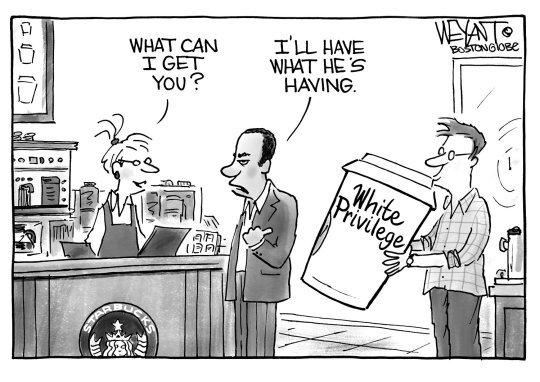
As Mclntosh stated, white privilege is ‘unearned assets’ given to you on the bases of your skin, not your skills. Continuously, we see people try and paint minorities as the ones that caused this curse of bad fortune, dismissing the existence of white privilege entirely in the process. Even more childish than that, people demand the end of affirmative actions as though the playing field has been set leveled for everyone. It isn’t, and to say it has is a clear slap to the face of every disadvantaged black and brown person who lives in this country.
2. Referring to related and appropriate readings and screenings from the course, describe how your selection represents racial and ethnic identities (and if applicable, intersectionality). In what ways does your selection for each of the journal entries generate a conversation regarding race, ethnicity, and cultural diversity?
The way my selection has represented racial identity is through the lens of the one-drop rule. Through Henry Louis Gates Jr. article titled “How Many ‘White’ People Are Passing?’ he discusses how the roles are beginning to show what was the aftermath of the one-drop rule.
When talking about the fallout of such a law, it iscreated a precedence of people ignoring the existence of their white parent in order to box that person in to a ‘colored only’ section. For the piece I picked, it creates a conversation by questioning about how often that rule wasn’t used and how it created an unneeded divided.
“‘Bryc found that about 4 percent of whites have at least 1 percent or more of African ancestry […] “the percentage indicates that an individual with at least 1 percent African ancestry had an African ancestor within the last six generations, or in the last 200 years. This data also suggests that individuals with mixed parentage at some point were absorbed into the white population,’ which is a very polite way of saying that they ‘passed.’” (Gates, 2011)
However, when you compare that to African Americans, the percentage is far more staggering, showing that people who looked “white enough” wasn’t always the case for mixed-race people. Shockingly enough, it is stated that: “research shows that the average African American has a whopping 24 percent of European ancestry.” (Gates, 2011)
24?! That’s means, unlike with white people, African American’s bloodline had someone fully white not as far back. Many people of mixed-race background submerged themselves in to the African American community, as well as the obvious underlining effects of sexual assault of enslaved black women. The article gets even more interesting when they dive into where the hidden ancestry might show up more, showing that whites living in the south had a higher chance of having unknown African DNA.
“In South Carolina at least 13 percent of self-identified whites have 1 percent or more African ancestry, while in Louisiana the number is a little more than 12 percent. In Georgia and Alabama the number is about 9 percent. The differences perhaps point to different social and cultural histories within the south.” (Gates, 2011)
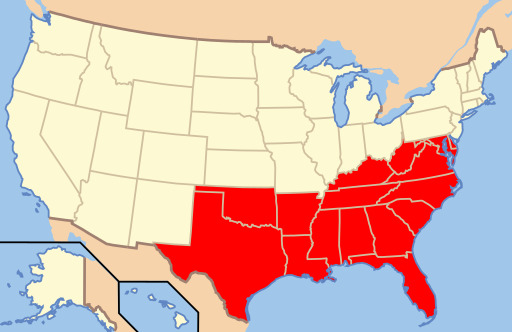
It begs to ask the question how many people are unaware of their own identity due to the fear of the past, having grandparents who lied about their linage in order to get a better life for their offspring.
3.How does your selection relate to the course readings, screenings and discussions? Reflect upon the representation and circulation of racial and ethnic identities in popular visual culture. Your reflections should be attentive to the intersectionalities of race, ethnicity, sexuality, religion, socioeconomic class and gender.
When it comes to the popular visual culture and “white passing” the stories are definitely there. At the turn of the century, literature had a bit of an obsession of the concept of “passing” as white. The novel like “Passing”, “Imitation of Life” and other tales followed ambiguous African-Americans. The novel “Invisible Man” was less about running between the lines of white and black, but rather a social commentary about a fictional scenario of an ambiguous African American man who drifts between two worlds, unnoticed as an onlooker, and discussing economical and political tensions that are rising.
Overall, when we thinking of “passing” individuals in the media, we notice that many sided with their white side to secure roles. For Broadway star, Carol Channing, she did not even claim her black ancestry until 2002 - at the age of 80. Before that point, she only identified as of European descent. Having been shielded from her own identity till the age of 16, it wasn’t a surprise that Channing had a lot of unsettling ignorance resided about her own heritage, making cringeworthy comments.

When she was told that her father was partly black from her grandfather, she said: “I know it's true the moment I sing and dance. I'm proud as can be of [my black ancestry]. It's one of the great strains in show business. I'm so grateful. My father was a very dignified man and as white as I am. My [paternal] grandparents were Nordic German, so apparently I [too] took after them [in appearance]” (Chicago Tribune, 2003)
I feel uncomfortable now even looking at her say that being black was “one of the great strains in show business.” Her comments were distasteful, dismissing how slaves were forced to perform in front of their masters and how that led into subcultures of new music like blues and country. She chalked up all of her talent to her black grandfather and her white looks to her white ancestors. If only she knew that wasn’t how genetics work. Perhaps, if the divide placed on mixed-race people wasn’t so strenuous, we wouldn’t have cases of ignorance like this.
For the most part, the media has mainly shown the stories of mixed raced women, not showing the struggle of mixed-race men who have to choose if they’d “pass” as only one race. As I stated before, “Invisible man” isn’t really about passing because his own race wasn’t up for debate, but rather what he saw due to his ambiguousness.
There’s many reasons as to why women were the main focus when talking about “passing.” However, it becomes obviously clear in the film Imitation of Life, writing the mixed-race girl off as a trickster for being something she wasn’t. In a sense, Hollywoods take on “passing” women was that they were deceptive, completely disregarding the essential need of passing as white. Sadly, in Imitation of Life, the mixed-race girl is beaten to a pulp after her white date finds out she’s mixed with black.
Sources:
Zielbauer, Paul von 2005
“Race a Factor in Job Offers for Ex-Convicts”
New York Times, July, 17, 2005
Mclntosh, Peggy 1989
“White Privilege: Unpacking the Invisible Knapsack”
Gates, Louis Henry
“How Many ‘White’ People Are Passing?”
https://www.theroot.com/how-many-white-people-are-passing-1790874972
Rusoff, Jane
“At 82, Channing still in step” Chicago Tribune
youtube
0 notes